The NFL's Worst Players by Franchise in the Super Bowl Era

The NFL's Worst Players by Franchise in the Super Bowl Era
Levi Brown | OT, Arizona Cardinals
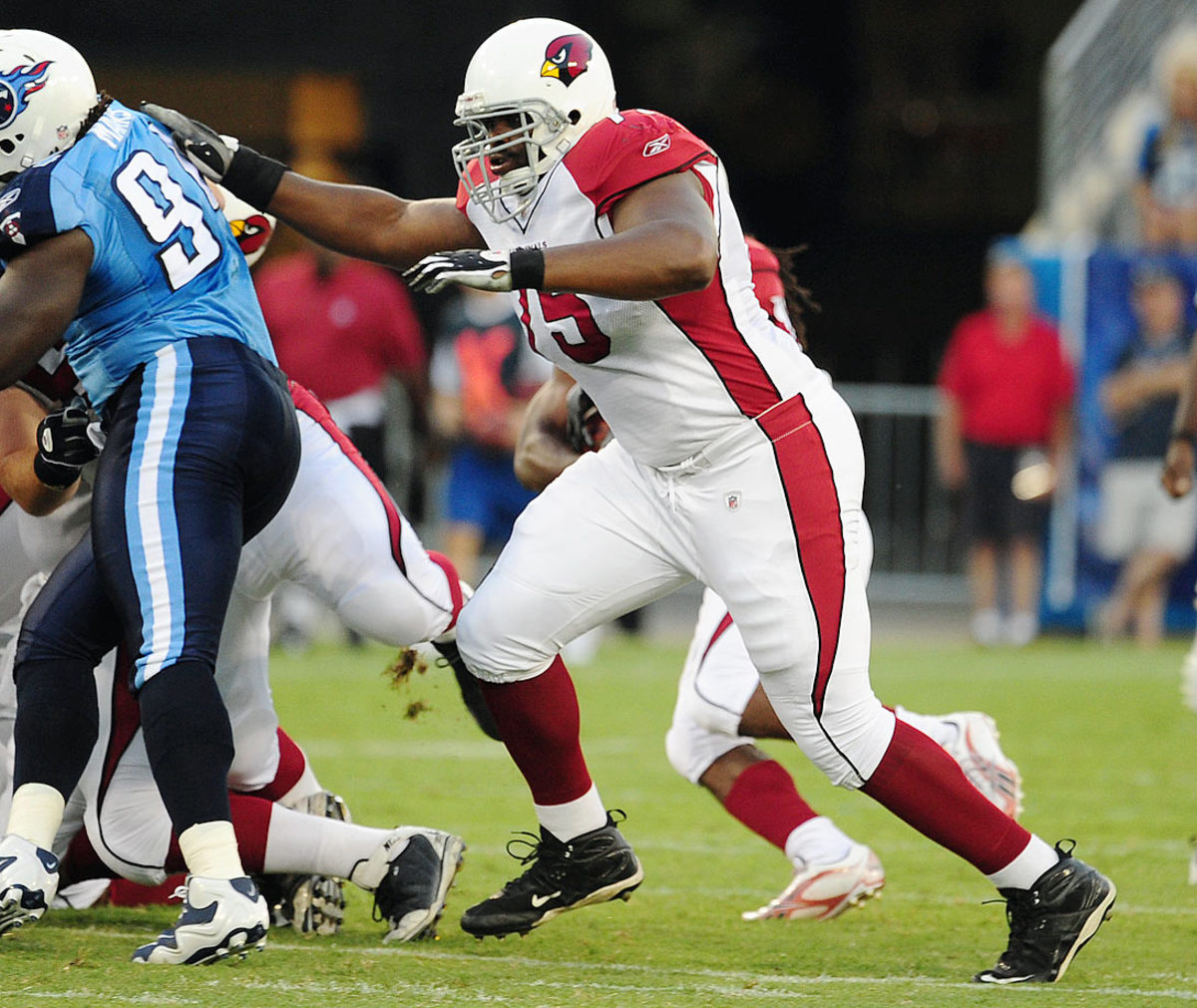
Brown was selected with the No. 5 pick in the 2007 draft, known to be a powerful road-grading blocker, but not a smooth pass-protector. When Brown hit the field for the Cardinals, he was a turnstile from the word go, and things didn't get much better. He allowed eight sacks in his rookie season, 11 in his second, nine in his third, 10 in his fourth... you get the picture. And this was when the Cardinals had Kurt Warner as their quarterback, with a quick-step, quick-release passing game. Brown did eventually play some quality football, and the Cardinals re-signed him in 2012 after first releasing him to save salary cap space. But he suffered a torn triceps that year, and allowed three sacks in the first week of the 2013 season. He was traded to the Steelers in Oct. 2013 and released by Pittsburgh before the '14 season.
Jamaal Anderson | DE, Atlanta Falcons
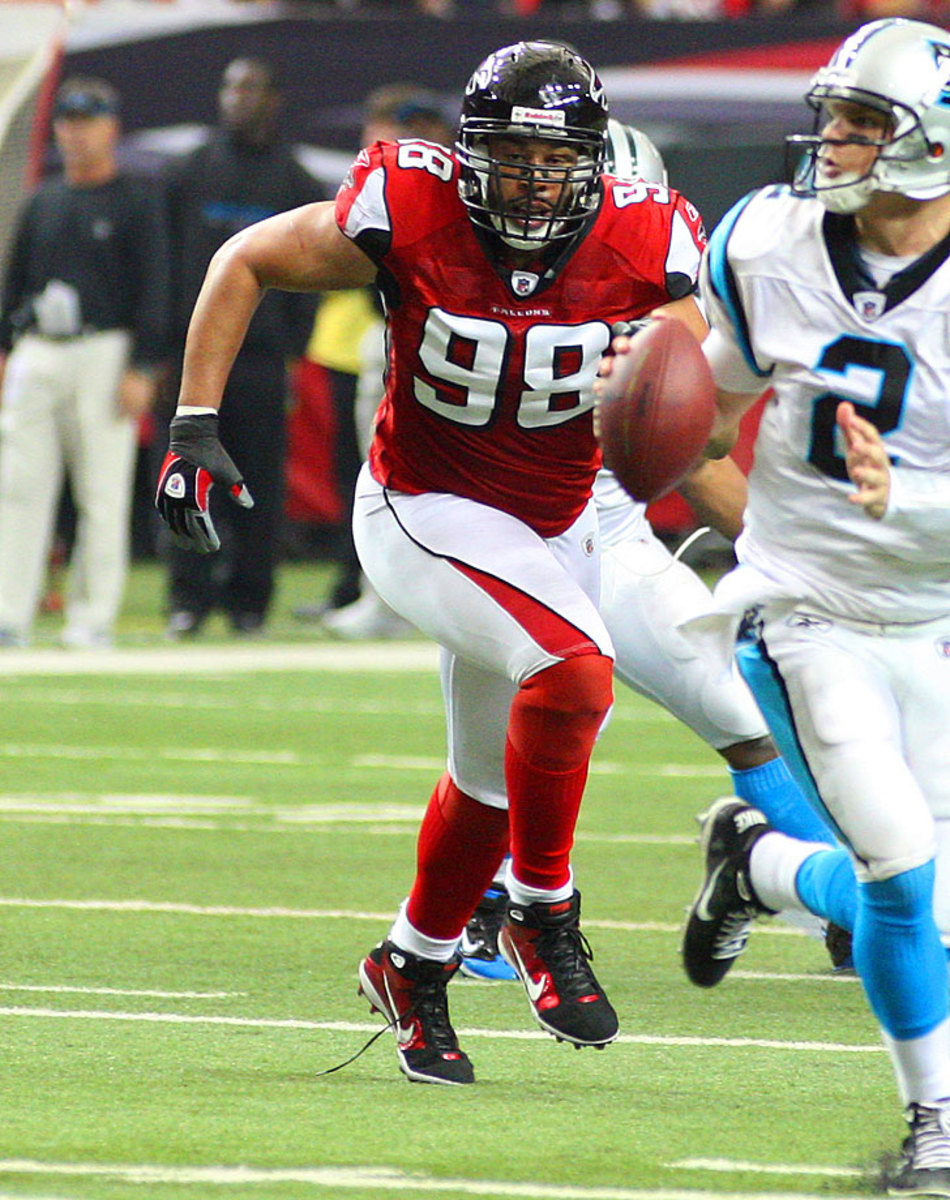
The 2007 season is renowned as the worst in Falcons history, mostly for the embarrassment that Bobby Petrino and Michael Vick brought to the organization. But the franchise was in trouble in the draft as well, because they selected Anderson out of Georgia Tech with the No. 8 pick. At 6'5" and 288 pounds, Anderson didn't have the pure speed to beat NFL tackles—he had no sacks in his rookie campaign, and he racked up just 5.5 over four years with the Falcons. The Colts, Bengals and Bears gave Anderson a shot after Atlanta gave up on him, but Anderson's NFL career effectively ended in Aug. 2013, when the Bears terminated his contract. He was a decent run defender, but you don't take strong-side ends in the high first round.
Elvis Grbac | QB, Baltimore Ravens
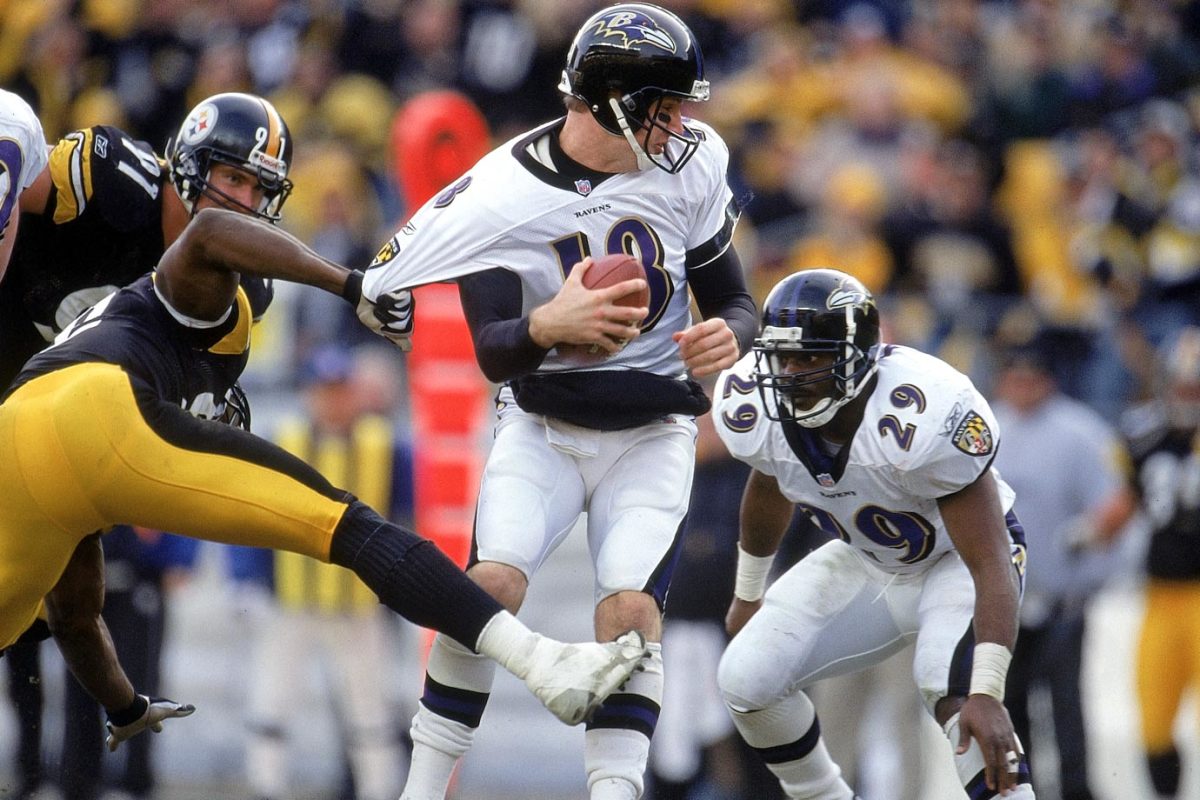
Grbac started 14 regular-season games and two playoff contests for the Ravens in 2001, which fortunately brings his total to the magical 16-game mark. You might recall that the 2000 Ravens won the Super Bowl, leaning on RB Jamal Lewis and an all-timer of a defense to mitigate Trent Dilfer's limited talents under center. Grbac was supposed to be a $30 million upgrade over Dilfer as Baltimore aimed for a repeat. Instead, he threw just 15 touchdowns to 18 interceptions that season, and was picked off three more times in a playoff loss at Pittsburgh. That was his final game with the Ravens.
Walt Patulski | DE, Buffalo Bills
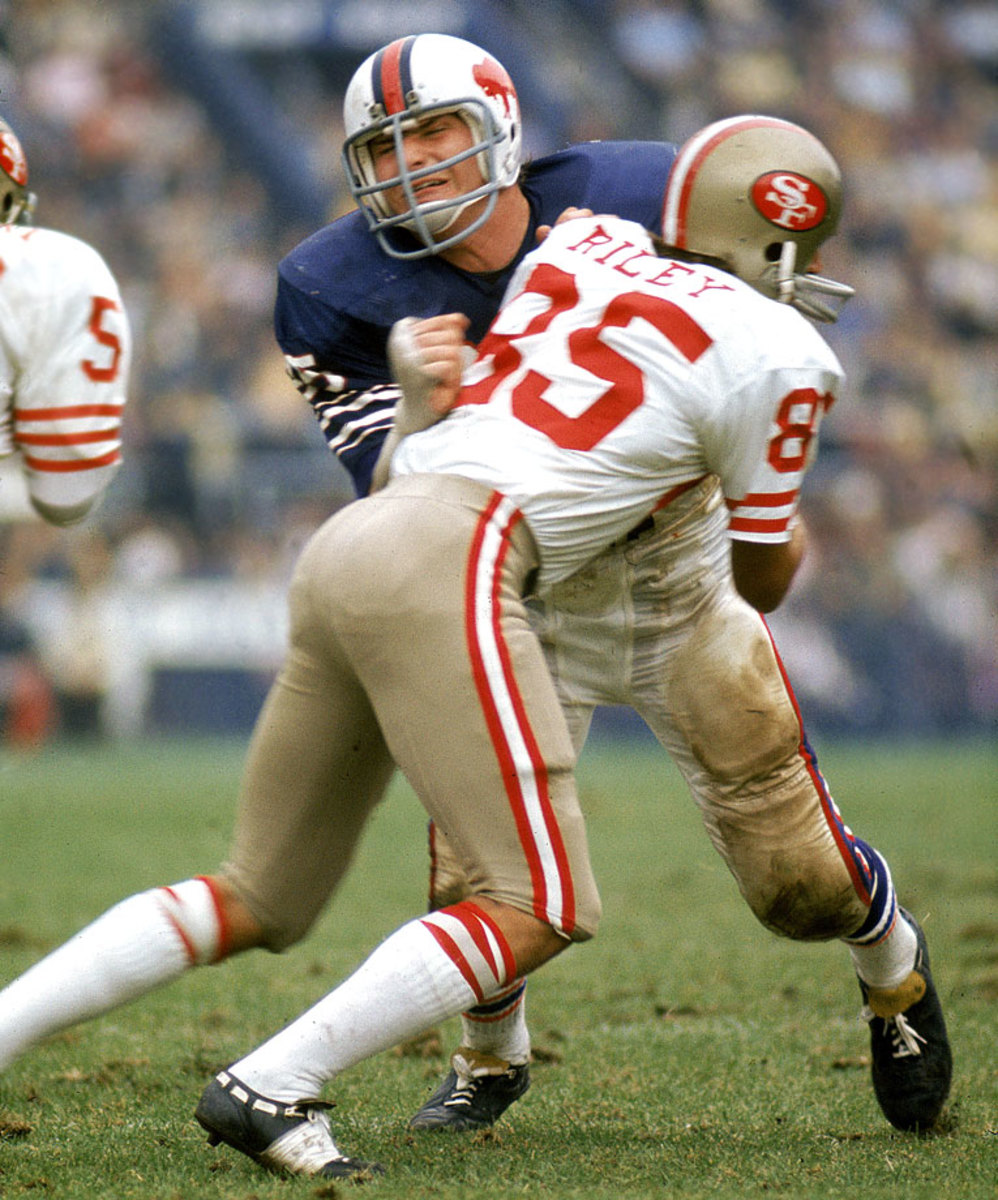
We tried our best to choose players who started 16 games, and since Aaron Maybin failed to even come close to that target, Patulski lands atop a field that also includes the likes of Mike Williams and J.P. Losman. Patulski is an old-school draft bust, the No. 1 overall pick in 1972 who was out of the league by 1977. At least he dodged the social-media firestorm that would have followed him through a modern-era career. "In tough situations, he would take the easy way out," his Buffalo coach, Lou Saban, told the L.A. Times back in 1993. "To be aggressive, it just wasn't him." The '72 draft produced five Pro Bowlers among the top 10 picks, plus a Hall of Famer (Franco Harris, No. 13). Patulski never came close to either.
Rae Carruth | WR, Carolina Panthers
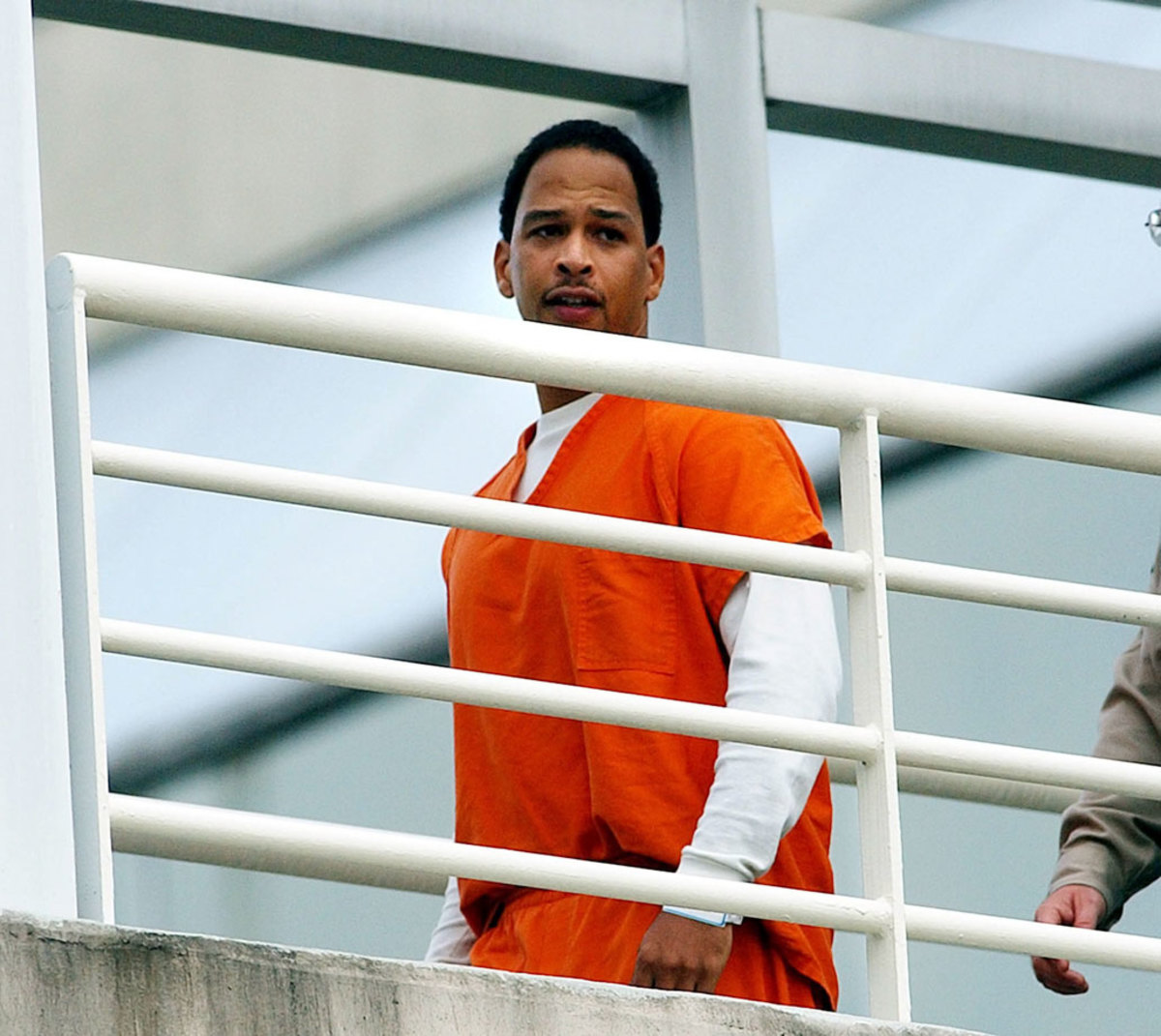
The Panthers took Carruth in the first round of the 1997 draft out of Colorado, and for a while, it looked like things might work out. He caught 44 passes for 545 yards and four touchdowns in his rookie campaign, but played in a total of just seven games over the next two years. Why is Carruth the worst player in Panthers history? Because in 2001, he was found guilty of conspiring to murder Cherica Adams, the woman who was carrying his child. Adams died in the shooting, and the child, Chancellor Lee Adams, suffered permanent brain damage as a result of the crime. I've been told by one former Panthers executive that nobody on the team saw this coming—Carruth had no criminal history to speak of, or at least any history they were able to uncover. He was sentenced to 18-24 years in prison.
Cade McNown | QB, Chicago Bears
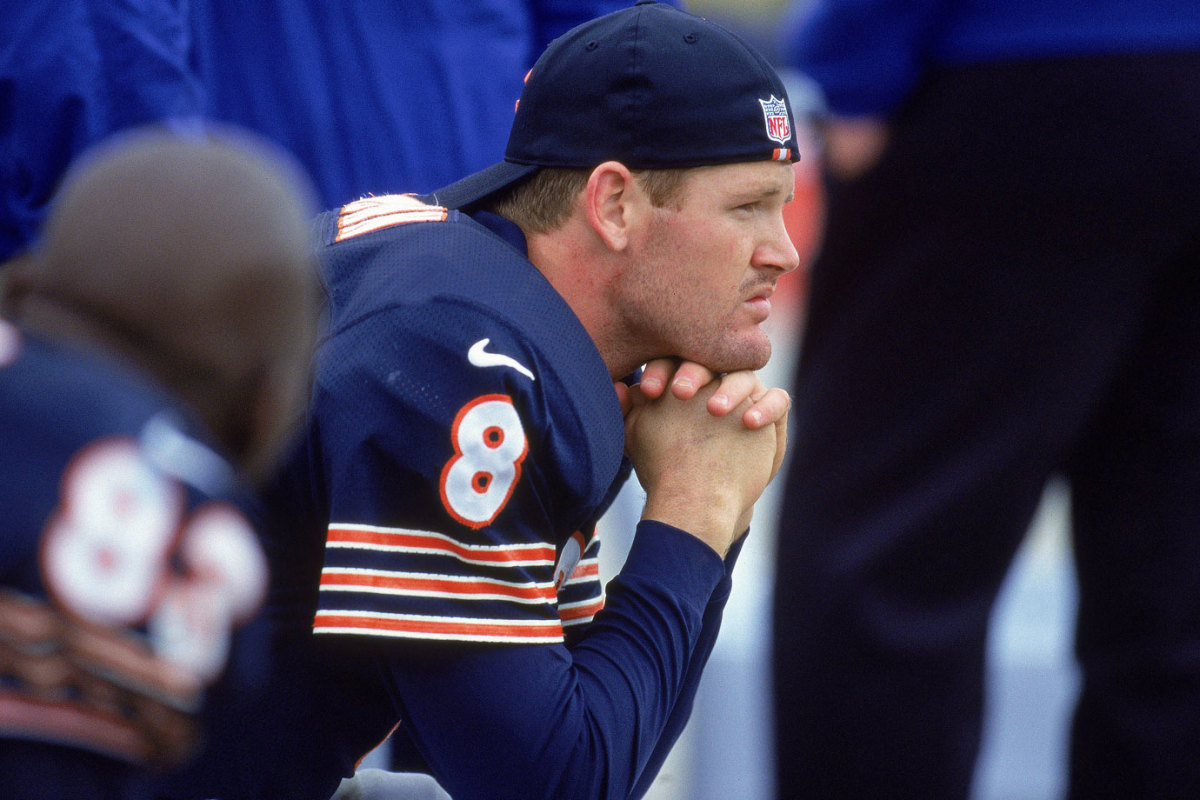
The decision to take McNown with the No. 12 pick in the 1999 draft is one of the worst of their epically bad quarterback personnel decisions. McNown was a holdout through most of his rookie preseason, but eventually signed a seven-year, $15 million deal with a $6 million signing bonus. There were incentives in that deal worth another $7 million—safe to say McNown at least saved the Bears money there. McNown played sparingly in his first five games, throwing his first touchdown pass (and his first two picks) against the Eagles in Week 6. Eventually, ineffectiveness and injuries forced the Bears to go in a different direction at the quarterback position. By the time he was traded to the Dolphins in 2001, McNown was reduced to fighting for Chicago's third-string job with Danny Wuerffel.
Akili Smith | QB, Cincinnati Bengals
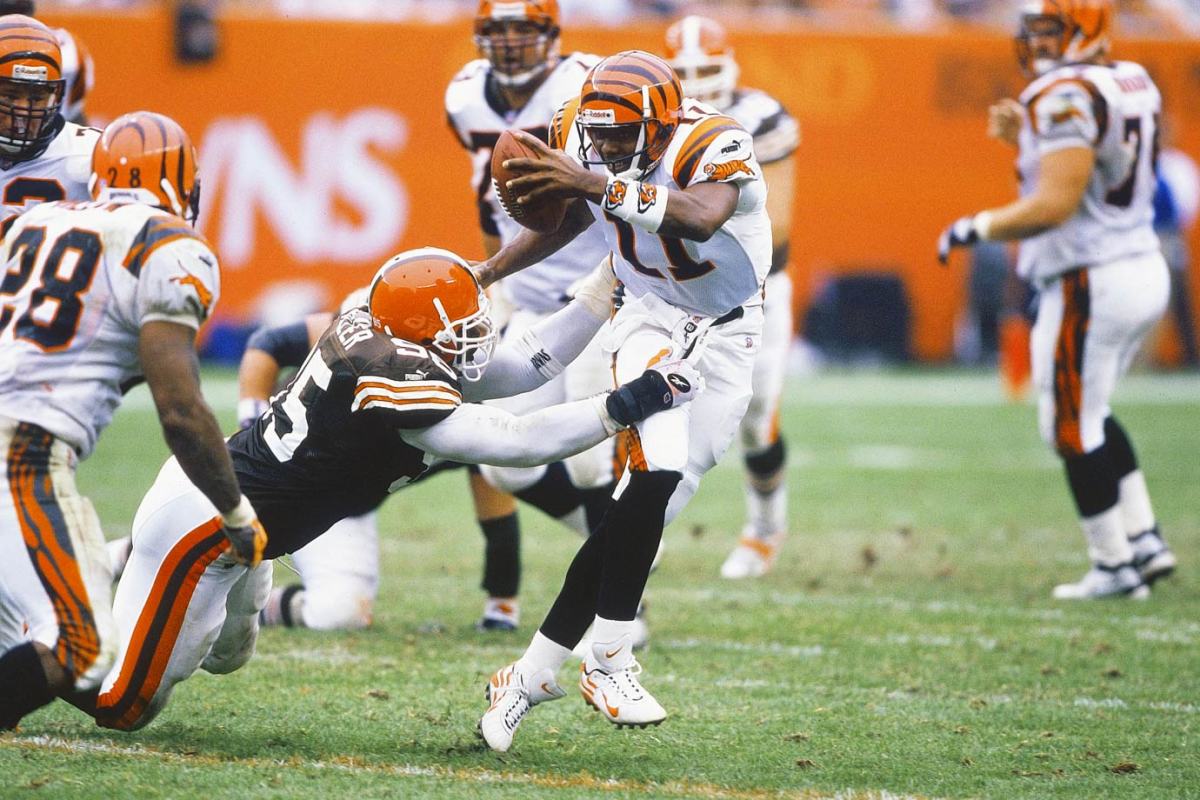
We wanted to drop monster DT Sam Adams on the list, just to mix things up—Adams inked an $11 million deal prior to the 2006 season, played sparingly as his weight hovered between 350 and 400 pounds, then was released ahead of '07. Unfortunately for Smith, though, there is a long drop from the worst Bengal to any other contenders. Smith, the No. 3 pick in 1999, threw five career touchdown passes. Five. He was 3–14 as Cincinnati's starter, most of those decisions coming during an extended 2000 run with the first team. That year, he averaged 113.9 yards per game and finished with an egregious completion percentage of 44.2.
Jeff Garcia | QB, Cleveland Browns
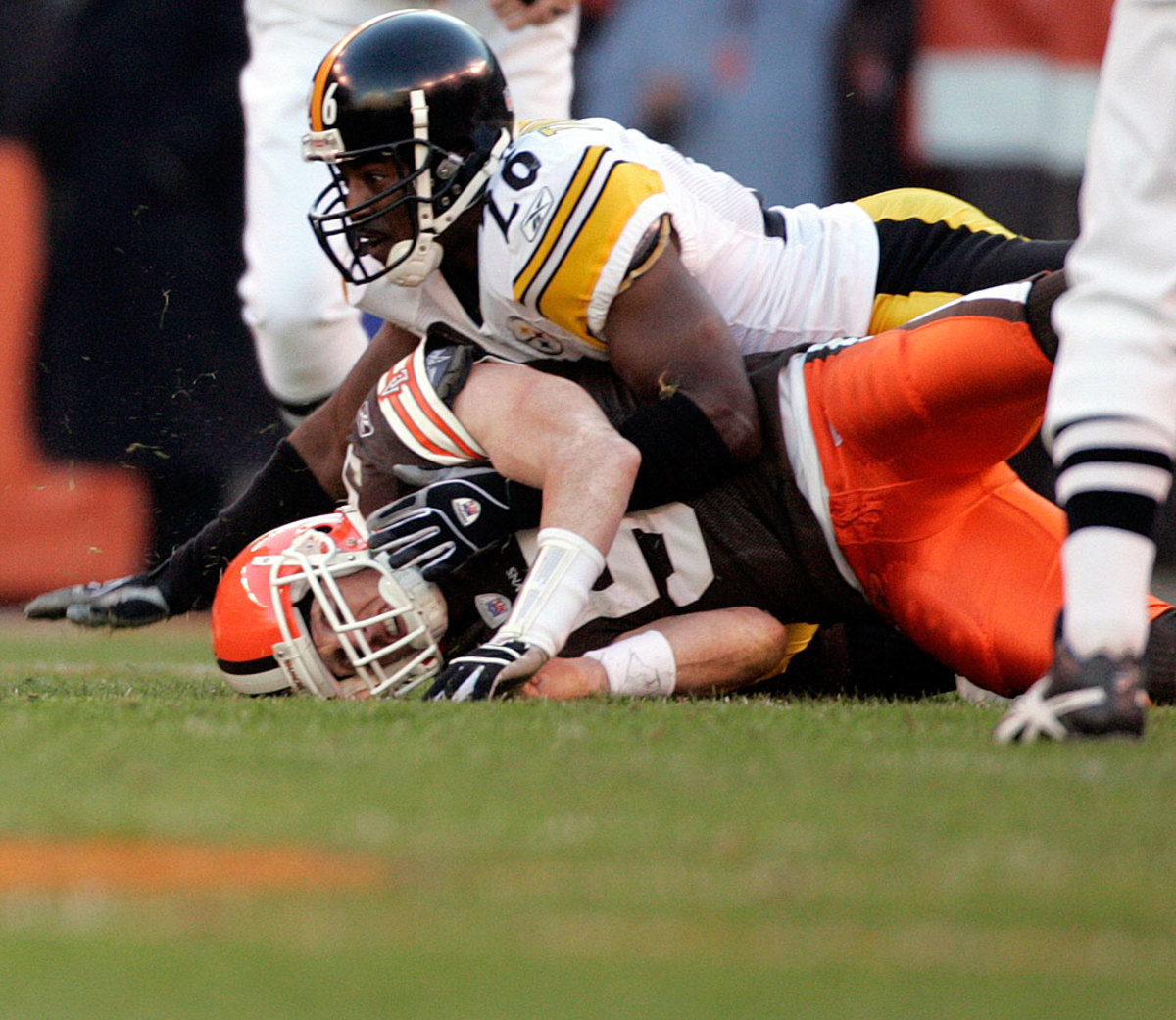
While Garcia did not start 16 games for the Browns, he made it to double digits (10) so we'll allow it. Even amongst the trash heap that is Cleveland's quarterback history, Garcia's $25 million contract stands out. The return on that investment was a string of 10 mostly brutal starts, including one of the worst quarterbacking performances in NFL history—an 8-for-27, three-interception, 0.0 QB rating performance vs. Dallas.
Shante Carver | DE, Dallas Cowboys
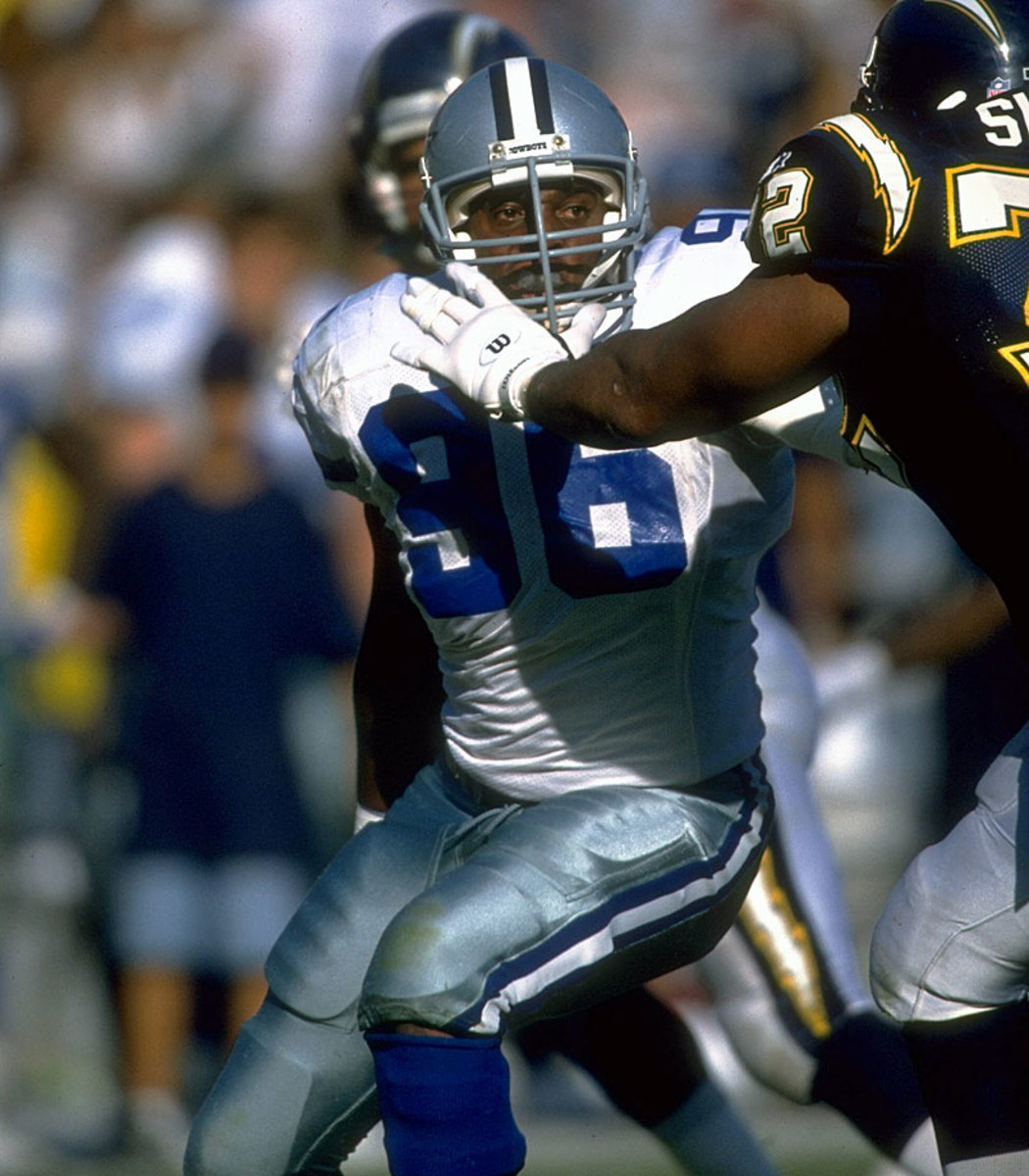
When Jerry Jones's efforts to trade up for USC's Willie McGinest were unsuccessful in the 1993 draft, the Cowboys took Carver from Arizona State with the No. 23 pick. Carver had amassed 10 sacks in his final collegiate season and set the school career record for quarterback takedowns—that was eventually broken by Terrell Suggs—so Jones can be forgiven for assuming he'd get something out of his first-rounder. In his rookie year, Carver was plagued by injuries and involved in an car accident. His third season was marked by a six-game suspension for repeated violations of the league's drug policy. Carver logged a career-high six sacks in 1997, but the Cowboys made no attempt to re-sign him, and he didn't catch on anywhere else. He finished his NFL career with 11.5 sacks and 20 solo tackles.
Steve Tensi | QB, Denver Broncos
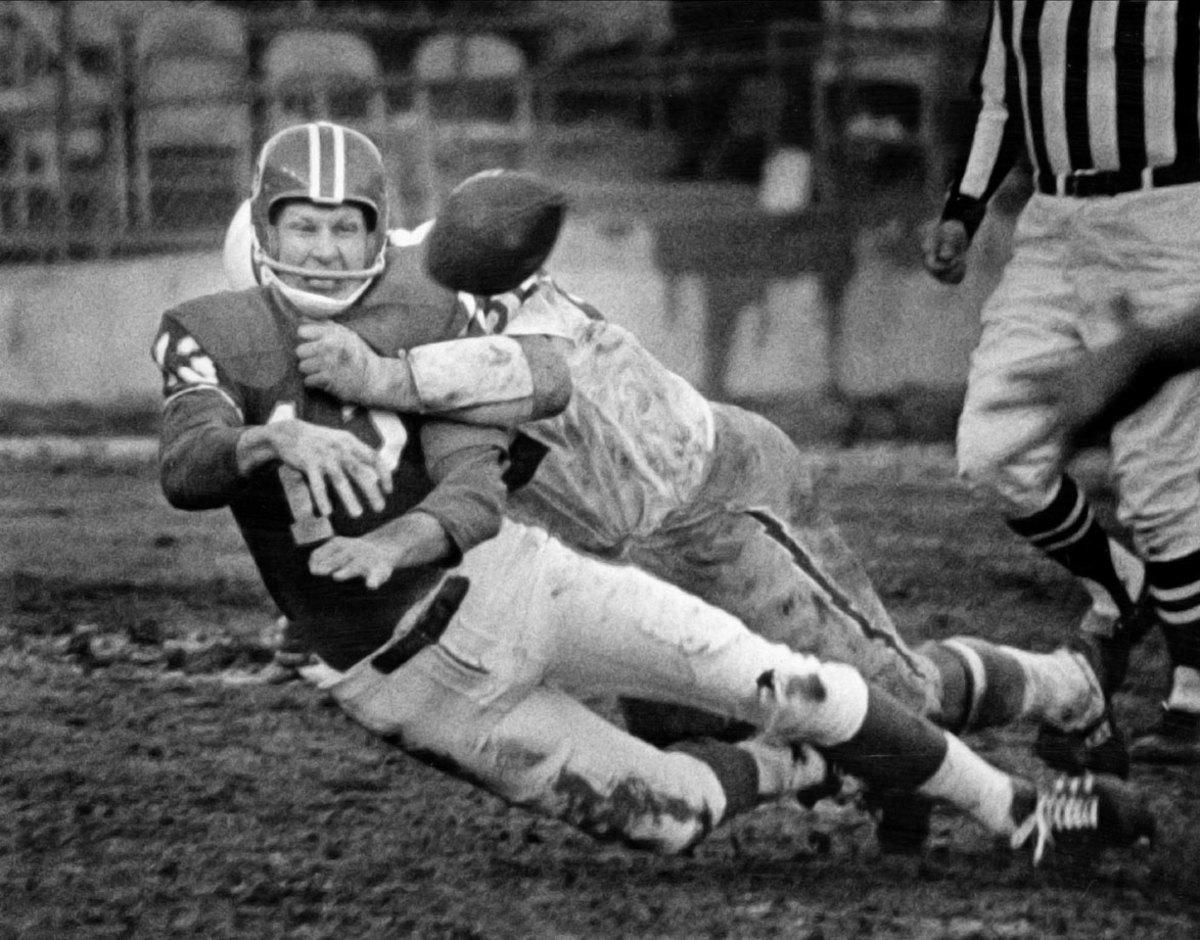
Digging back to the earliest days of the Super Bowl era for this one, if only because most of Denver's recent draft busts (Marcus Nash, Jarvis Moss, something called a Ted Gregory) played so few games with the franchise. Then still a member of the AFL, Denver tossed a pair of first-round picks San Diego's direction for the third-year quarterback. Tensi promptly tanked, ceding his starting gig in 1970 just as the AFL and NFL joined as one. He finished his Broncos career 10-21-1 with a 43% completion rate, 38 touchdowns and 45 interceptions.
Charles Rogers | WR, Detroit Lions
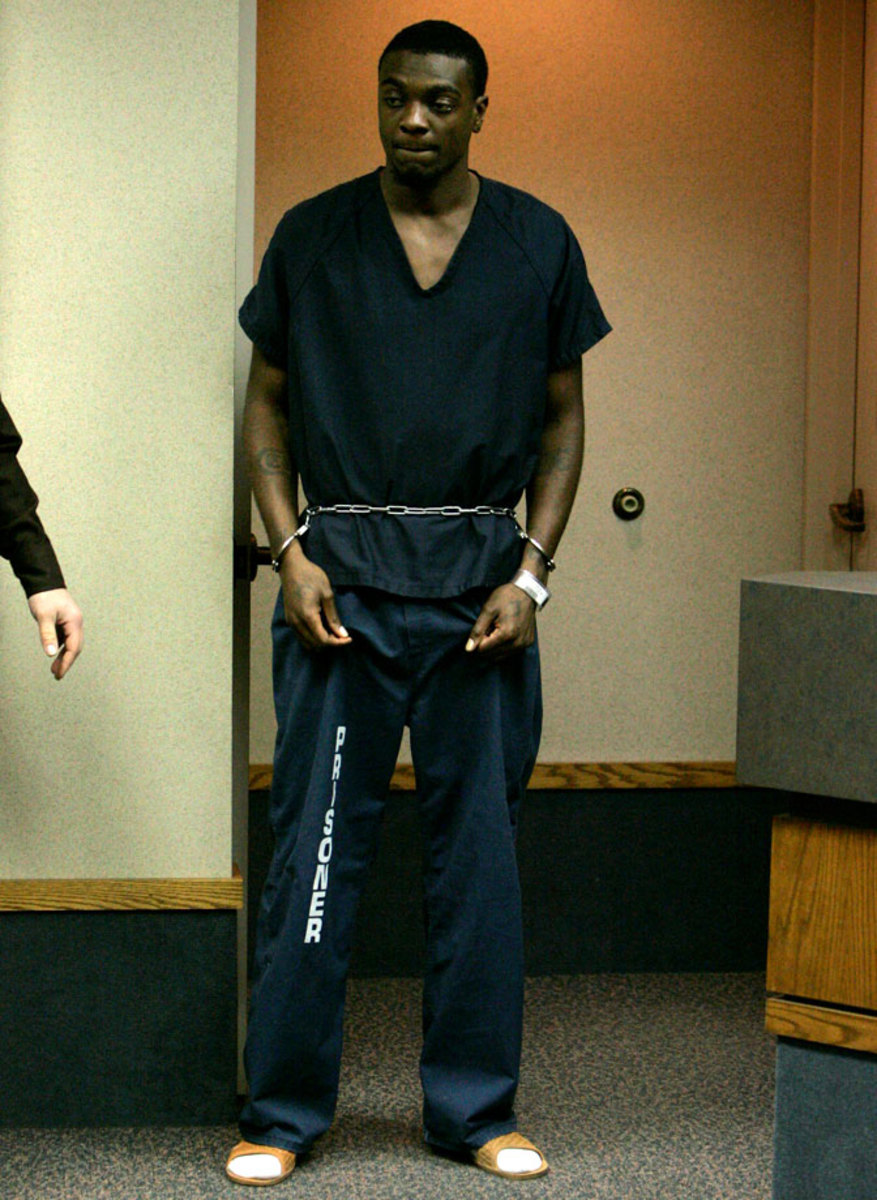
The Lions took Rogers with the No. 2 pick in the 2003 draft. (Andre Johnson went No. 3 to the Texans.) A broken clavicle ended his rookie season, and then Rogers suffered the same injury early in the '04 season. His history of failed drug tests while in college caught up to him in 2005, when he was suspended four games for multiple violations of the NFL's drug policy. This put Rogers in default of the contract he signed, and the Lions asked Rogers to pay back $10 million of the $14.2 in bonuses he received. In 2008 (the same day GM Matt Millen was fired), an arbitrator ruled that Rogers had to repay the team about $8.5 million, and he was in no condition to do so, after he couldn't find work with another NFL team. He found himself in repeated trouble with the law, and has struggled with drugs and alcohol.
Tony Mandarich | OT, Green Bay Packers
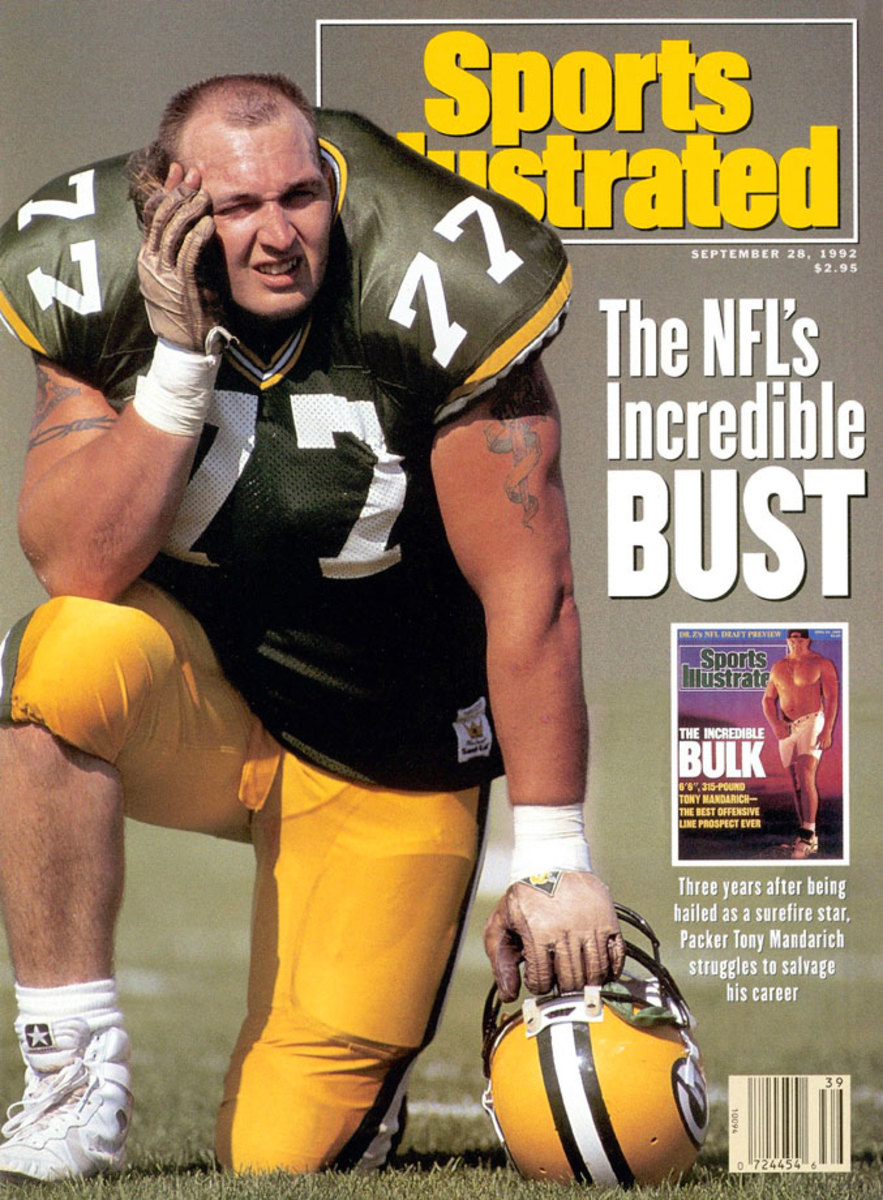
While his Michigan State coaches were saying Mandarich was the perhaps the best blocker the game had yet seen, opposing players and coaches were sniping about his alleged steroid use. The All-American could have proven the detractors wrong when the Packers took him with the No. 2 pick in the 1989 draft, but in the end, Mandarich was a jacked-up muscle freak who loved to pump iron, but tended to wilt when facing the NFL's best pass-rushers. He didn't have the strength and footwork for the next level, and he was indeed juiced up, which he admitted in 2008. After the Packers cut him in 1992, he spent time in rehab and finished his NFL career in a credible fashion with the Colts from 1996–98. A journeyman at best, Mandarich is perhaps the league's most prominent cautionary tale when it comes to pre-draft hype.
Todd Wade | OT, Houston Texans
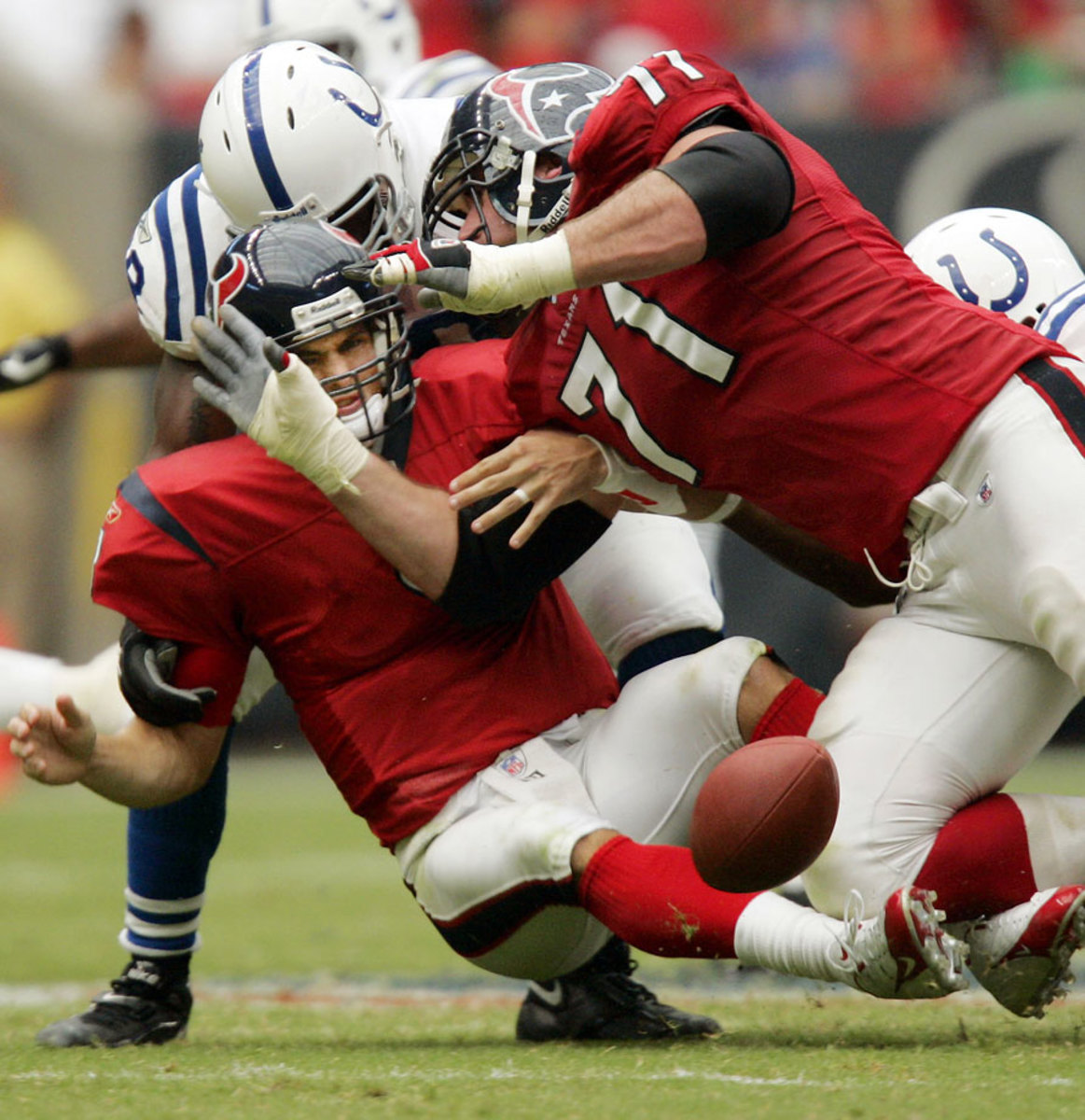
The Texans' status as a relatively new franchise limits the amount of botched draft picks and free-agent additions on the books. Wade may stand alone atop (on the bottom of?) the latter. After four years in Miami, Wade—a decent right tackle but nothing extraordinary to that point—signed a five-year, $25 million Texans contract, with $10 million guaranteed. He made it just two injury-plagued seasons into that deal before being released. Side note for you David Carr haters: He was not nearly as bad as history remembers him. Thrown into the fire on an expansion team, behind a miserable O-line (including Wade), Carr still managed to hang up some respectable numbers.
Trent Richardson | RB, Indianapolis Colts
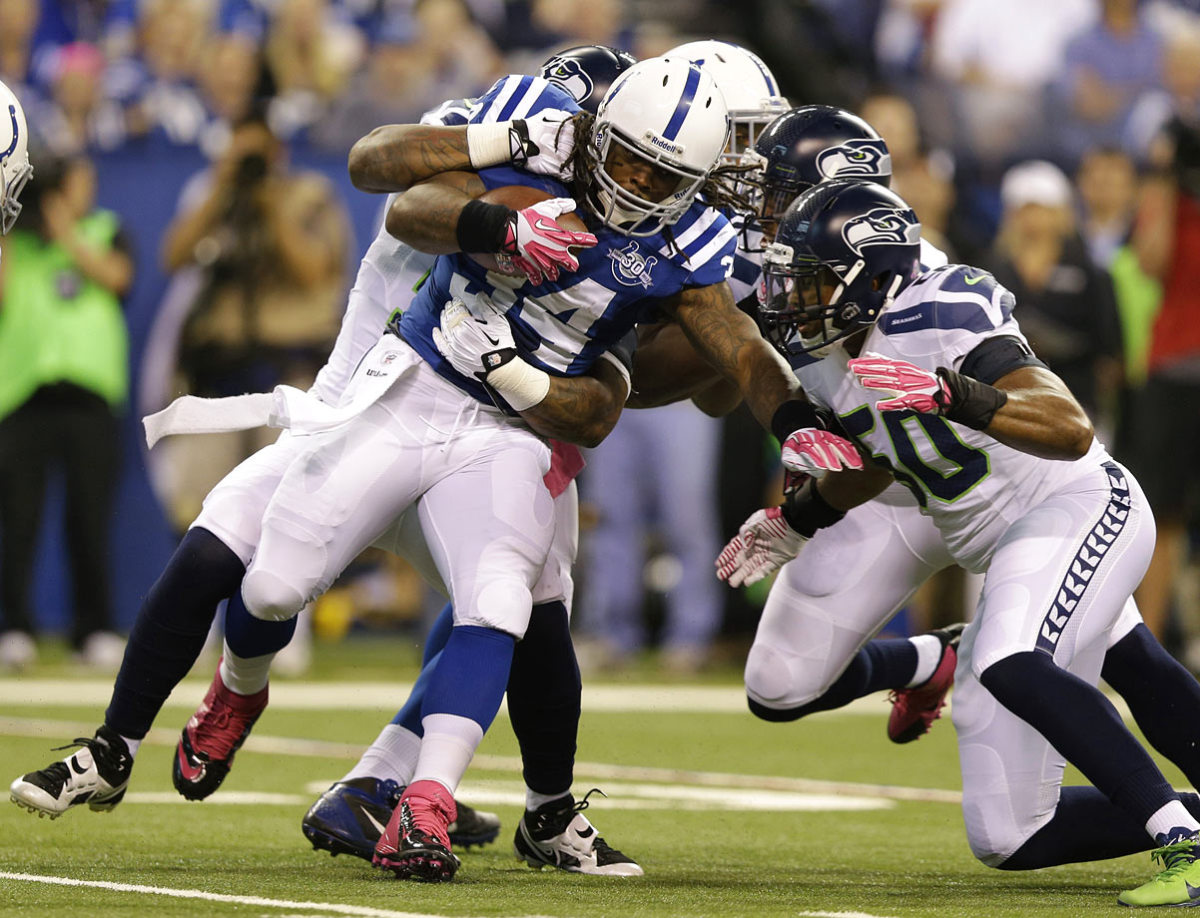
We're making an exception on the non-active player requirement for this one, because of the extremely unfortunate outcome of Richardson's time in Indianapolis (QB Art Schlichter was completely awful for the Baltimore Colts, but he didn't start 16 games). What is a worse reality for the Colts: that they sacrificed a first-round pick to acquire Richardson? Or that they held back two years' worth of Super Bowl goals by trying to use Richardson as a lead back? The 2013 and '14 Colts had other issues, namely in the trenches on both sides of the ball, but Richardson's sluggish style was an eyesore. He barely averaged more than 3.0 yards per carry in 29 games alongside Andrew Luck.
Derrick Harvey | DE, Jacksonville Jaguars
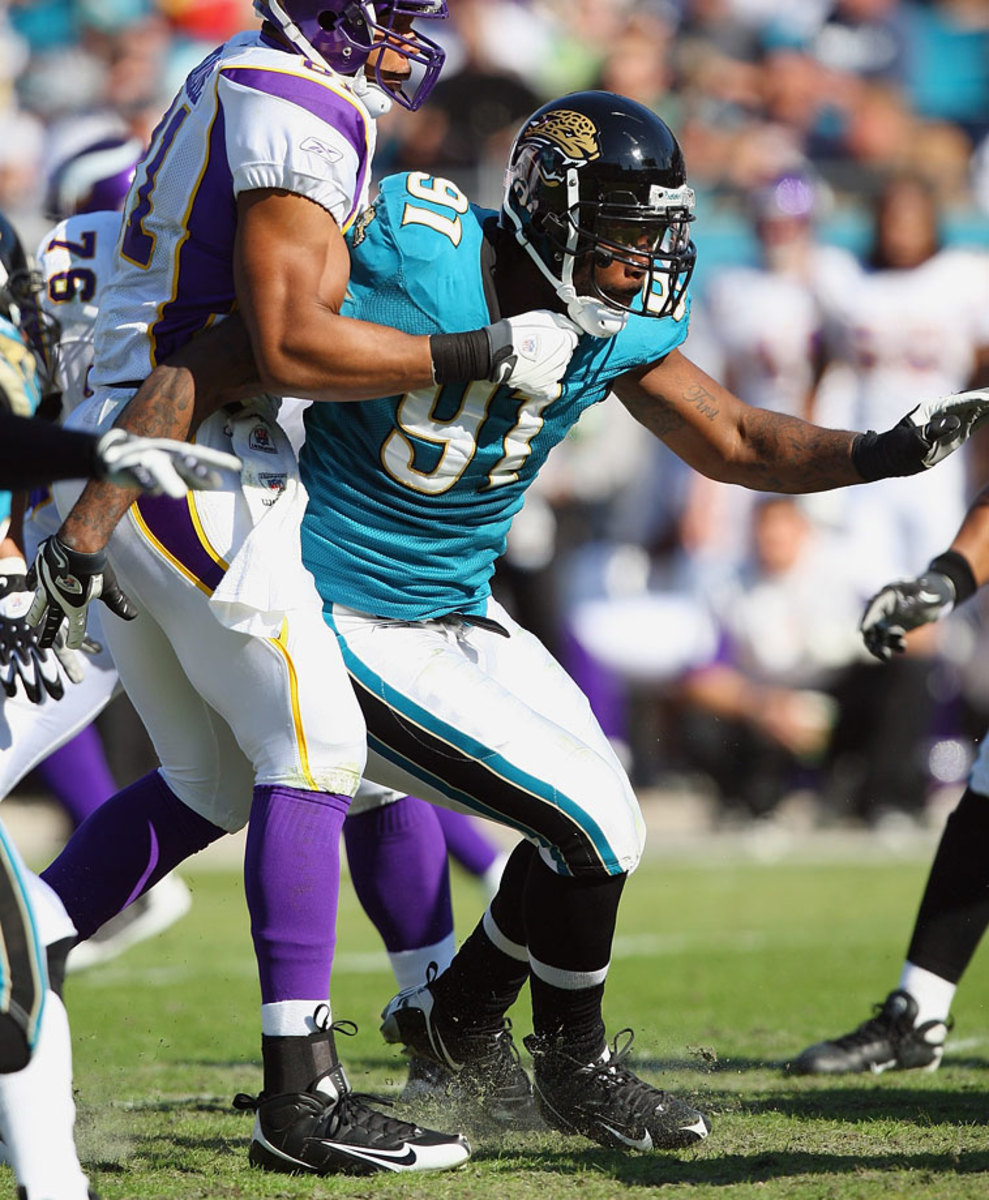
Jacksonville made Harvey the eighth-overall pick at the 2008 draft. By the 2010 season he was on his way out of town, as Jeremy Mincey began cutting into his snap count. The Jaguars' flip-flopping between 3–4 and 4–3 schemes did not help Harvey's NFL transition, but he has little room for excuses. Making matters worse: Jacksonville traded four picks to Baltimore for the right to take Harvey—for only eight sacks in three seasons. After Harvey was waived by the Jaguars, he was signed by the Broncos for a season, before his NFL career came to an end.
Todd Blackledge | QB, Kansas City Chiefs
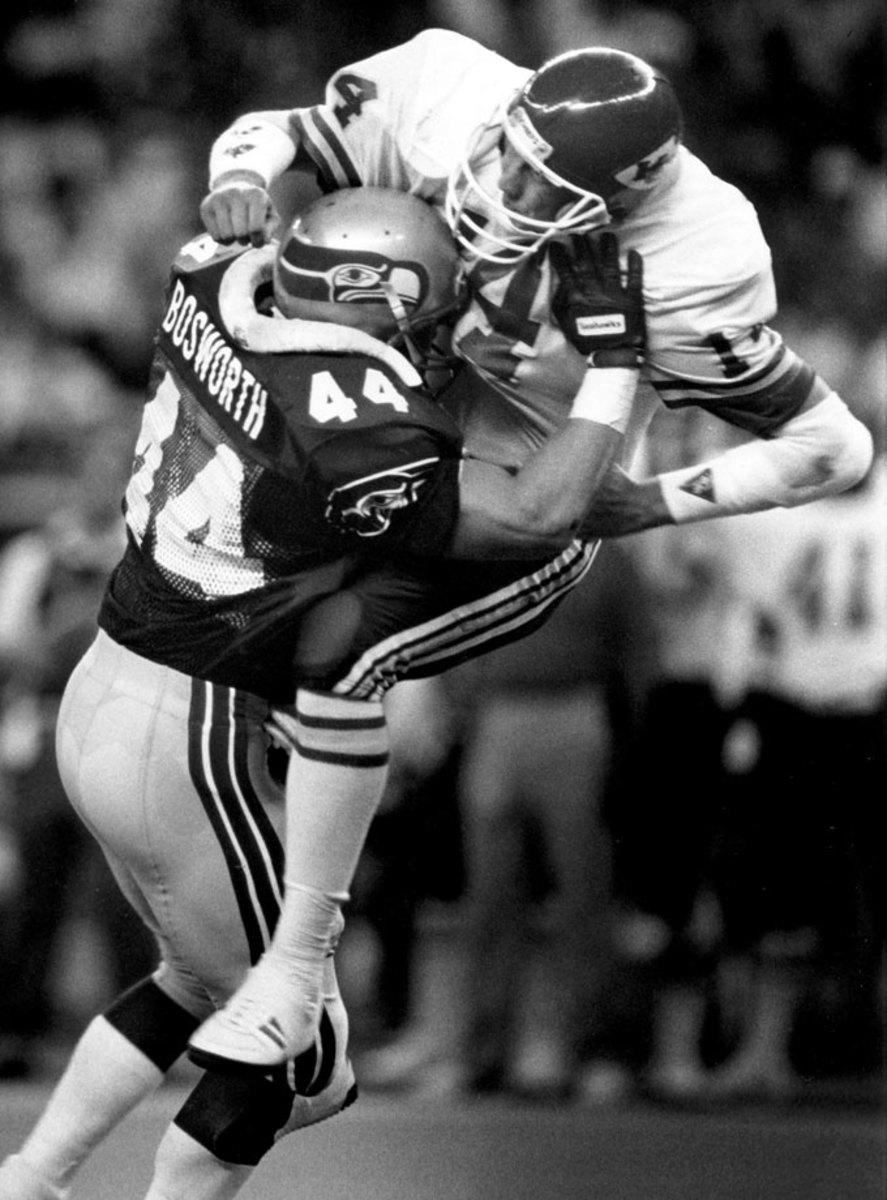
More regrets from the 1983 draft. This time, it's the Chiefs who blew it, choosing Blackledge with the seventh pick over Jim Kelly and Dan Marino, among others (heck, even Ken O'Brien would have been a better option). Blackledge's best season for Kansas City came in ... uh ... hold on ... 1984, maybe? His 147 completions and 1,707 yards that year were career highs. His career 60.2 quarterback rating was not the greatest.
John Bosa and Eric Kumerow | DEs, Miami Dolphins
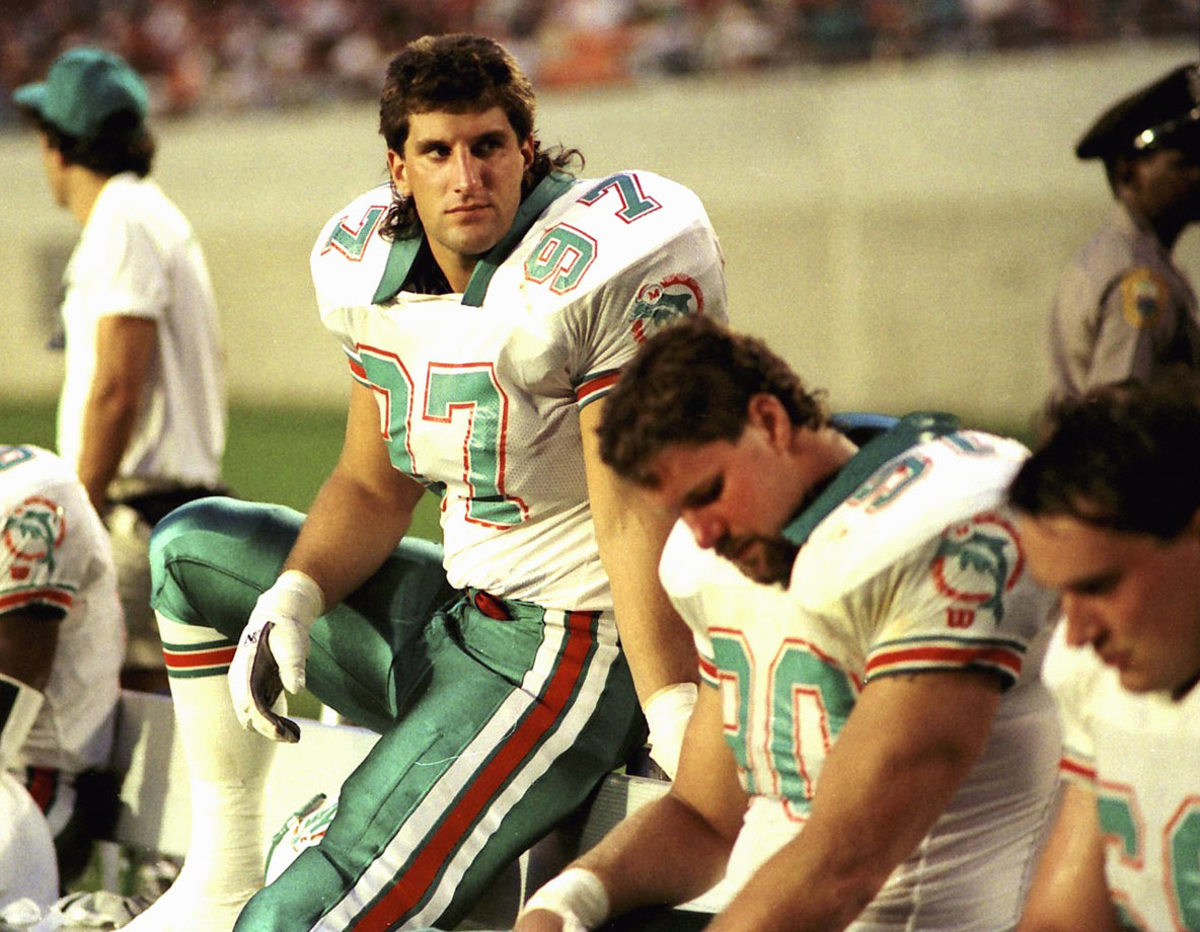
Tough to separate this duo because, right in the heart of Dan Marino's legendary career, the Dolphins spent back-to-back first-round picks on Bosa (1987) and Kumerow (1988). The duo combined for just 12 sacks with the Dolphins, each playing all of three seasons before calling it quits. Miami then spent a 1989 Round 1 selection on RB Sammie Smith, who fumbled enough to make it seem like he might be actively sabotaging the Dolphins.
Troy Williamson | WR, Minnesota Vikings
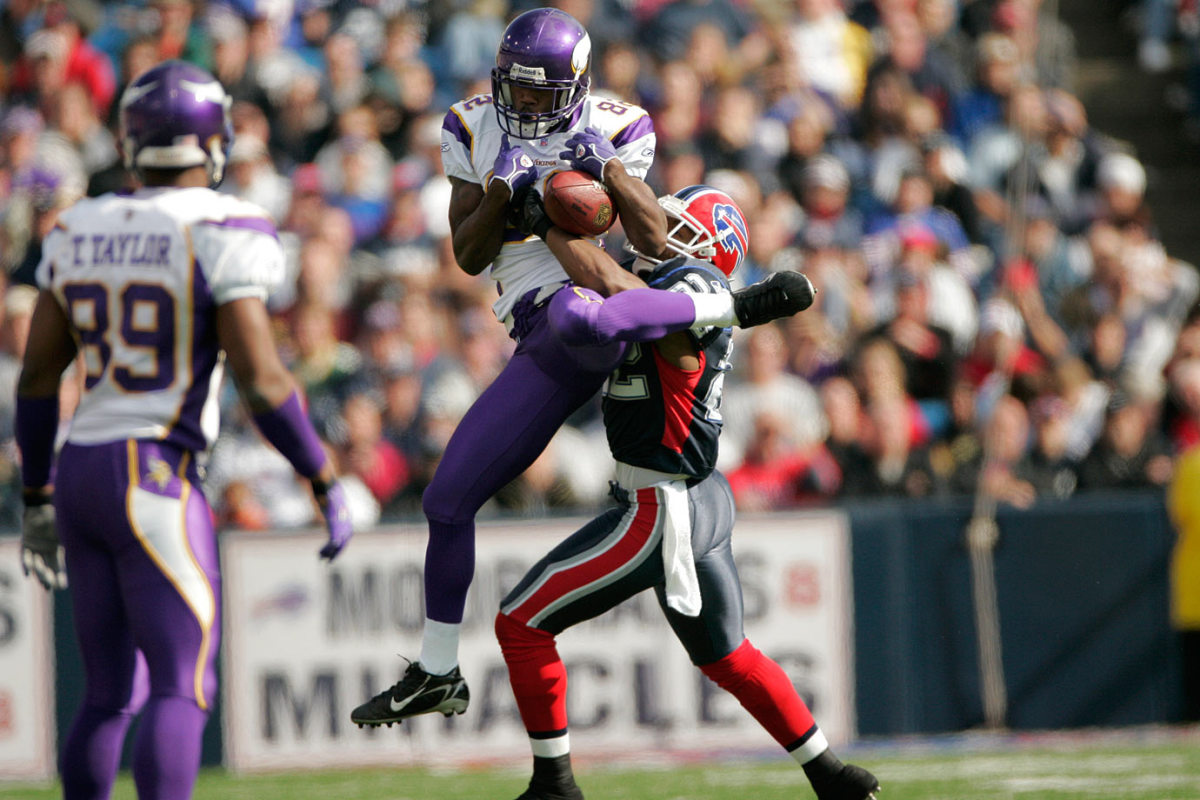
The Vikings had a need for speed in their receiver corps after trading Randy Moss to the Raiders in 2005, so they took former South Carolina star Troy Williamson with the No. 7 pick. At 6'1" and 203 pounds, and running a 4.28 40-yard dash at the scouting combine, Williamson seemed to have all the base attributes for NFL success. Except for one thing: he couldn't catch the ball. He dropped 11 passes in his rookie season to the 24 he actually caught, and his career catch rate with the Vikings was an absurdly low 47.3%. Williamson famously blamed this on depth perception issues, and then even more famously challenged then-Vikings head coach Brad Childress to a fight after he was traded to Jacksonville. Williamson left the game with 87 catches for 1,131 yards and four touchdowns in his NFL career.
Hart Lee Dykes | WR, New England Patriots
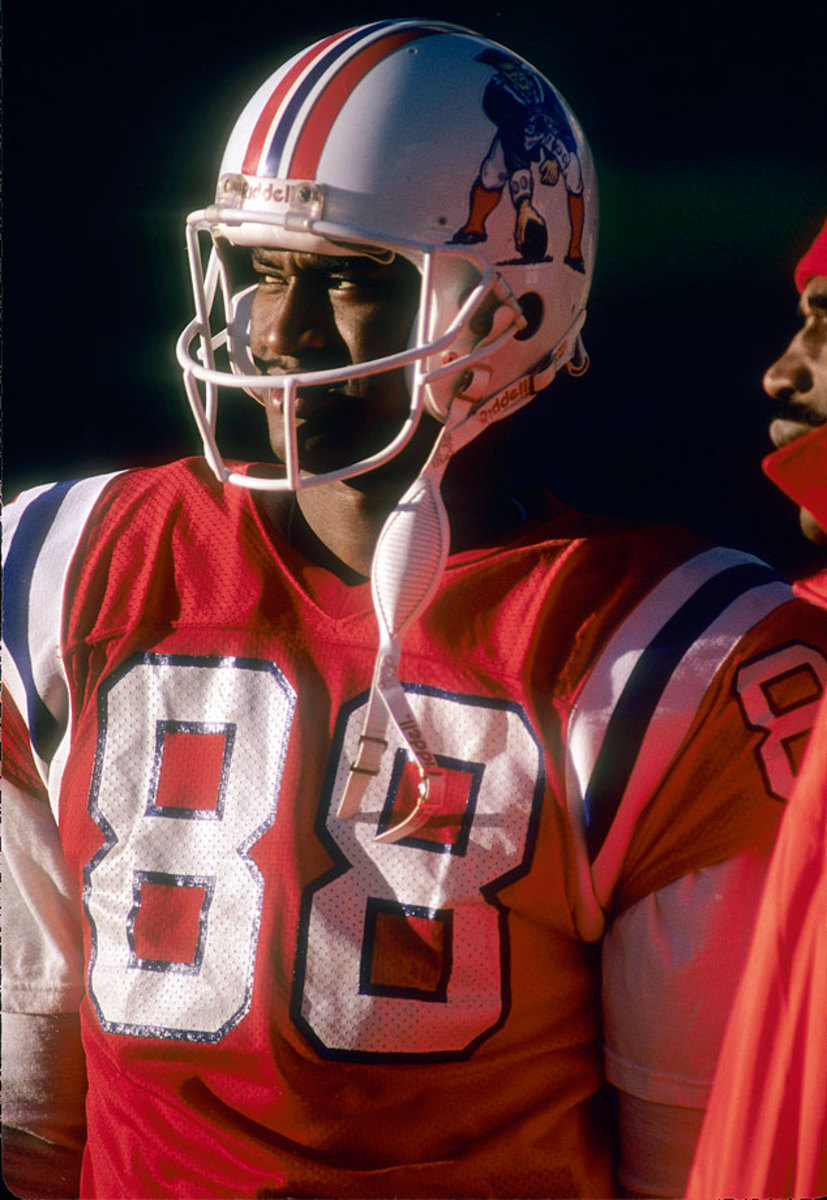
A couple of reasons for including Dykes here. First, he was a member of the 1990 Patriots, a 1–15 debacle of a team arguably on par with the 2008 Lions and 1976 Bucs as the worst in NFL history; and second, his career ended shortly after he suffered an eye injury during a nightclub fight. Dykes, too, was a first-round pick, for which he returned 83 catches.
Johnathan Sullivan | DT, New Orleans Saints
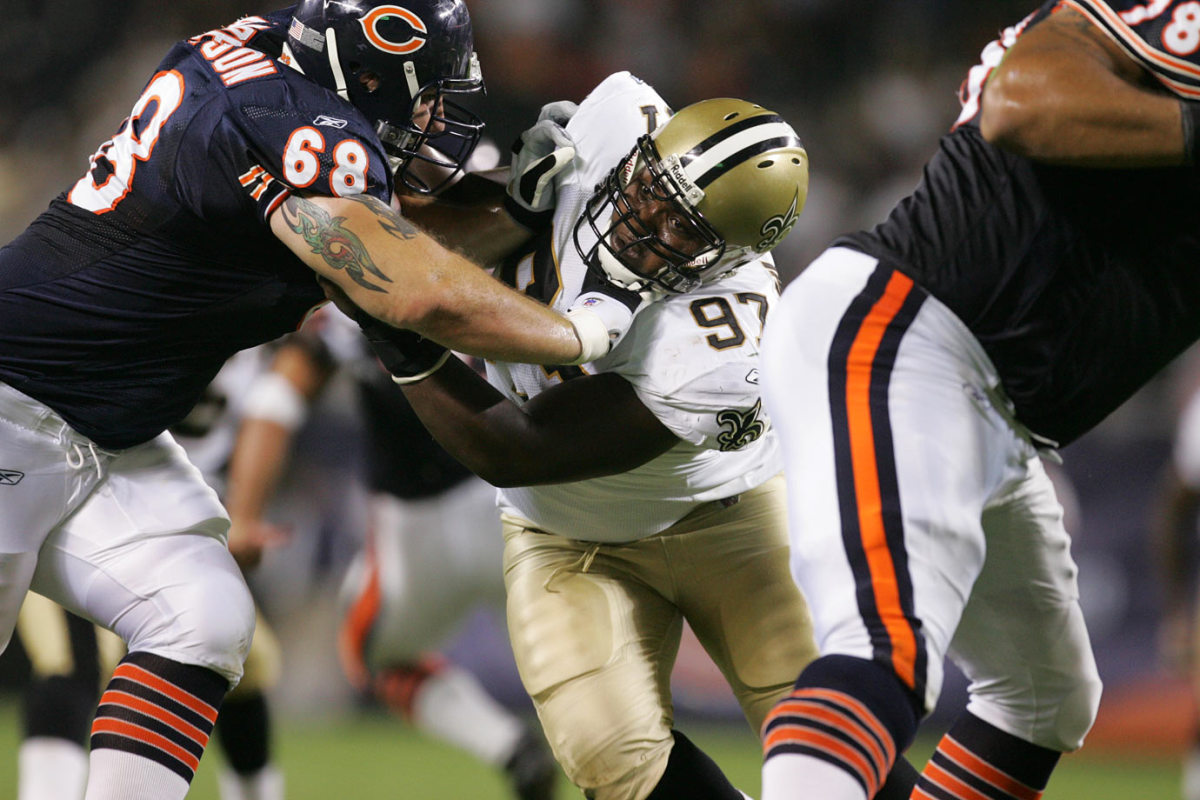
The Saints had the No. 17 and No. 18 picks in the 2003 draft after trading Ricky Williams to the Dolphins. What they did with those two picks still boggles the mind—they traded them both to the Cardinals to move up to the No. 6 pick, where they selected Georgia defensive tackle Johnathan Sullivan. The rookie looked okay in 2003, racking up a sack and 25 total tackles, earning kudos for his "nasty disposition." But he reported out of shape in 2004 and never really found his way back to the good graces of head coach Jim Haslett. Sullivan was demoted to the second team in the 2004 preseason, effectively ending his tenure as a Saints starter—not to mention his NFL career. New Orleans traded Sullivan to the Patriots for receiver Bethel Johnson in June 2006, and New England released him shortly thereafter.
William Joseph | DT, New York Giants
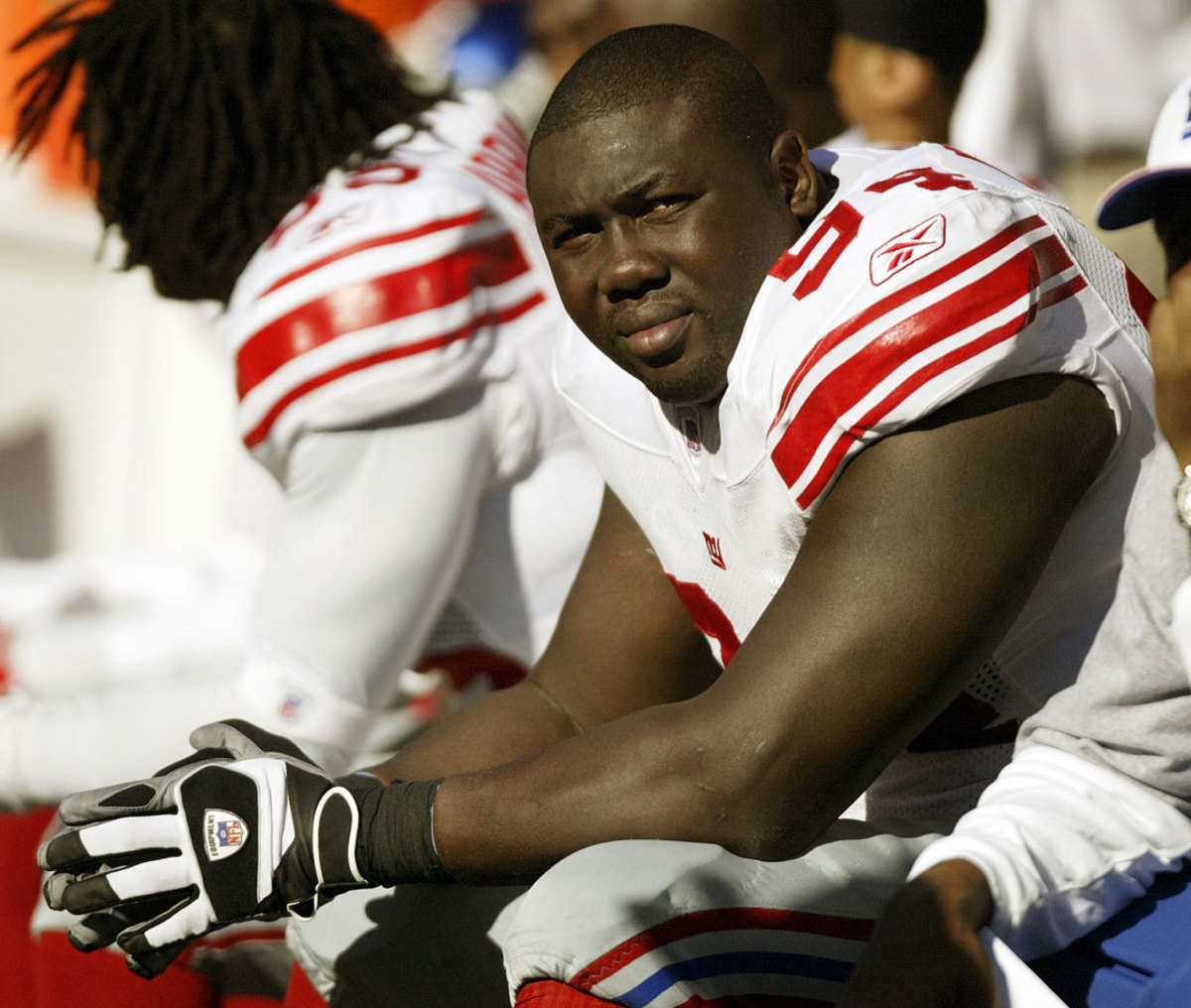
Ernie Accorsi made a lot of great moves during his tenure as the Giants' GM, but picking Joseph in the first round is one he'd no doubt like to have back. Accorsi wanted a defensive lineman in the 2003 draft, but couldn't move up from the No. 25 pick. In this draft, eight of the first 15 picks were defensive linemen (including Kevin Williams and Terrell Suggs), and Accorsi was left with the low-hanging fruit. In four years with the Giants, he managed just four sacks and 20 solo tackles; he followed that up with two unremarkable seasons with the Raiders. The last most people heard from Joseph, he was pleading guilty to charges that he fraudulently cashed tax refund checks. Unhappy Giants fans might insist that it wasn't the first larceny Joseph had performed in his life.
Lam Jones | WR, New York Jets
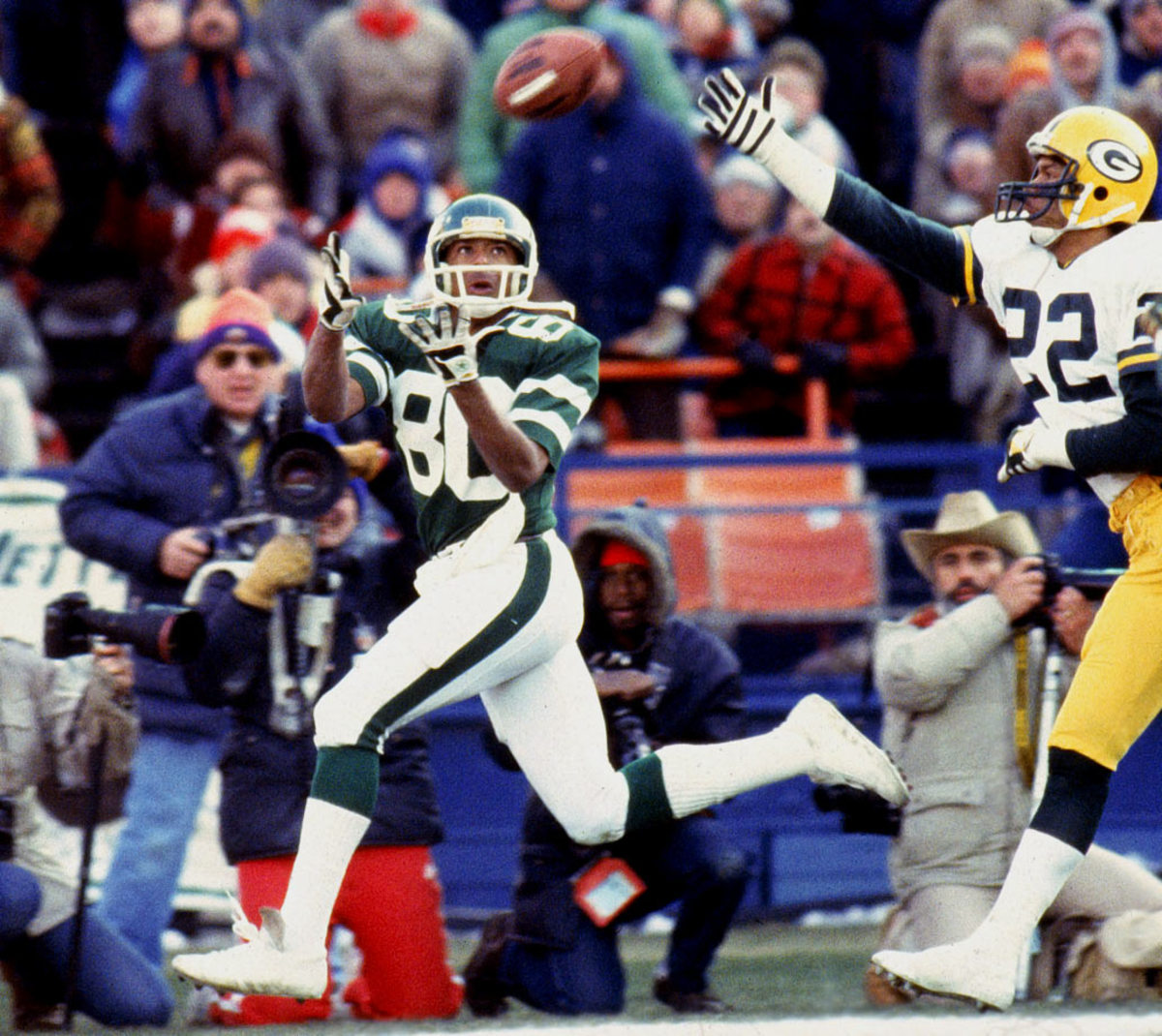
Not every guy on this list is a draft bust, I promise, but there's really no avoiding it when defining a "worst" player as someone who let down his franchise and fans, and completely failed to execute on the field. To wit: Johnny "Lam" Jones, the No. 2 pick at the 1980 draft. Jones averaged fewer than 500 yards receiving in his five seasons with the Jets, who sent the 13th and 20th selections to San Francisco for a shot at the University of Texas athlete. A gold medal-winner in the 4x100 relay at the 1976 Olympics, Jones never parlayed his world-class speed into any measure of sustained NFL success.
JaMarcus Russell | QB, Oakland Raiders
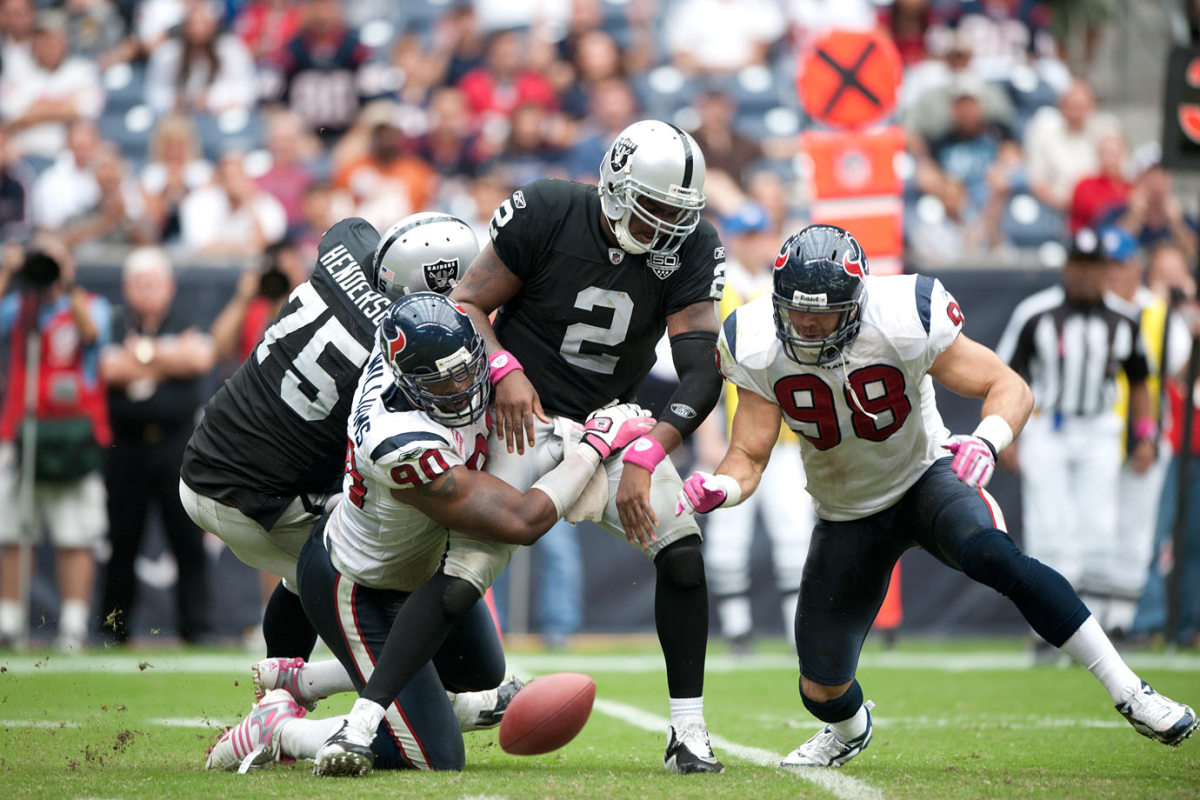
Trended a touch quarterback-heavy down the stretch here, but the AFC West has claimed some real stinkers. Unofficially tabbed with the nickname "Jam Jam" (presumably as in, "Hey, Jamarcus, what do you want for lunch?" "Jam covered in a different flavor of jam"), Russell came off the board No. 1 at the 2007 draft. That's one pick before Calvin Johnson, two before Joe Thomas, six before Adrian Peterson, 11 before Marshawn Lynch and, well, you get the idea. Russell battled weight issues during his career—a brief, three-year career that saw him go 7–18 for the Raiders, with aggressively pedestrian numbers across the board.
Michael Haddix | RB, Philadelphia Eagles
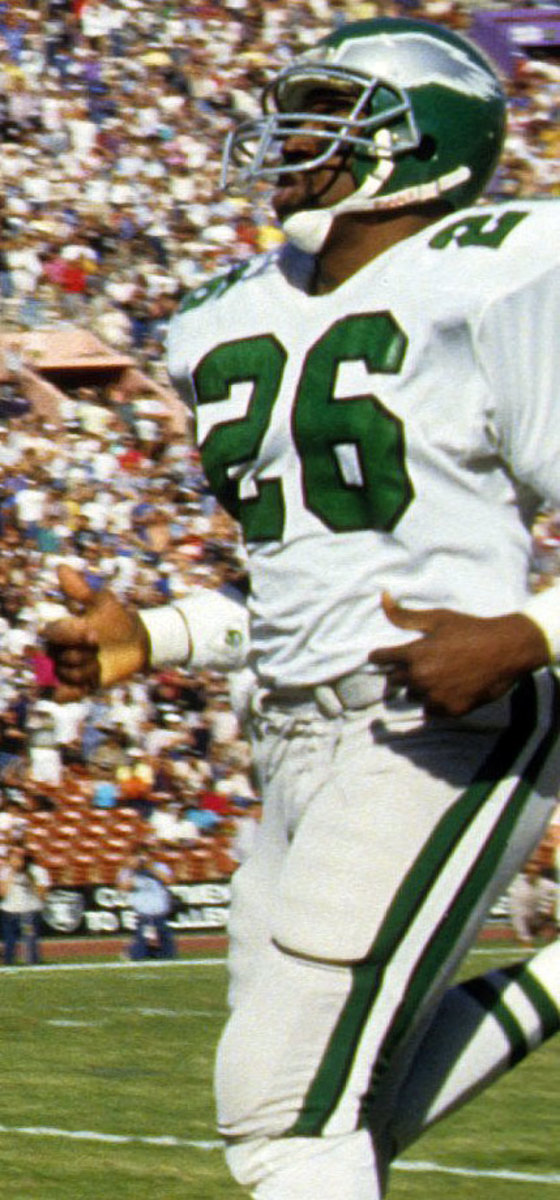
Haddix was a star in Mississippi State's Wishbone offense. In 1981, he led the SEC in yards per carry with 5.7, beating out big names such as Lionel "Little Train" James and Herschel Walker. The Eagles responded by selecting Haddix with the No. 8 pick in the 1983 draft, with guys like Bruce Matthews, Jim Kelly, Dan Marino and Darrell Green still on the board. Haddix rushed 401 times for 1,189 yards, three touchdowns and a paltry 3.0 yards per carry. Haddix was a decent receiver, and became a good blocker as the Eagles realized he couldn't get past his own limitations at the NFL level, but when he tacked on another 142 rushing attempts for the Packers in 1989 and '90, he was able to claim the record for the lowest career yards per carry average (3.0) for any back in NFL history with more than 500 carries.
Mark Malone | QB, Pittsburgh Steelers
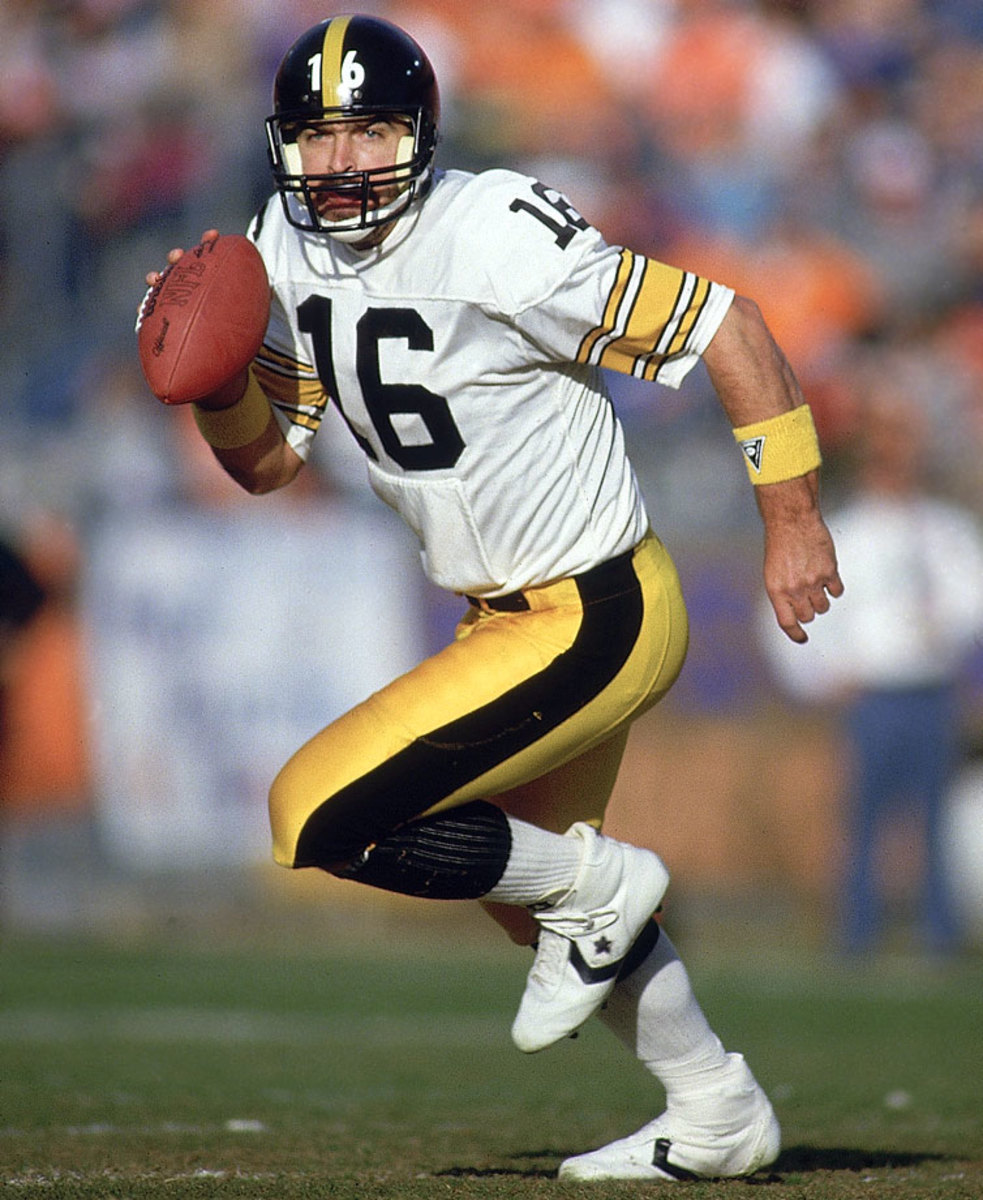
Somehow, the 1980 first-round pick managed to hang on in Pittsburgh for seven seasons—first as Terry Bradshaw's backup and then as a starter—despite posting mostly miserable stats. Malone never topped a 54% completion rate in any season; he never threw more than 16 touchdown passes, and in five of the six seasons in which he attempted a pass, he finished with more interceptions than touchdowns. And all that may still have been water under the bridge had Malone's presence not led the Steelers to pass on hometown hero Dan Marino at the 1983 draft.
Ryan Leaf | QB, San Diego Chargers
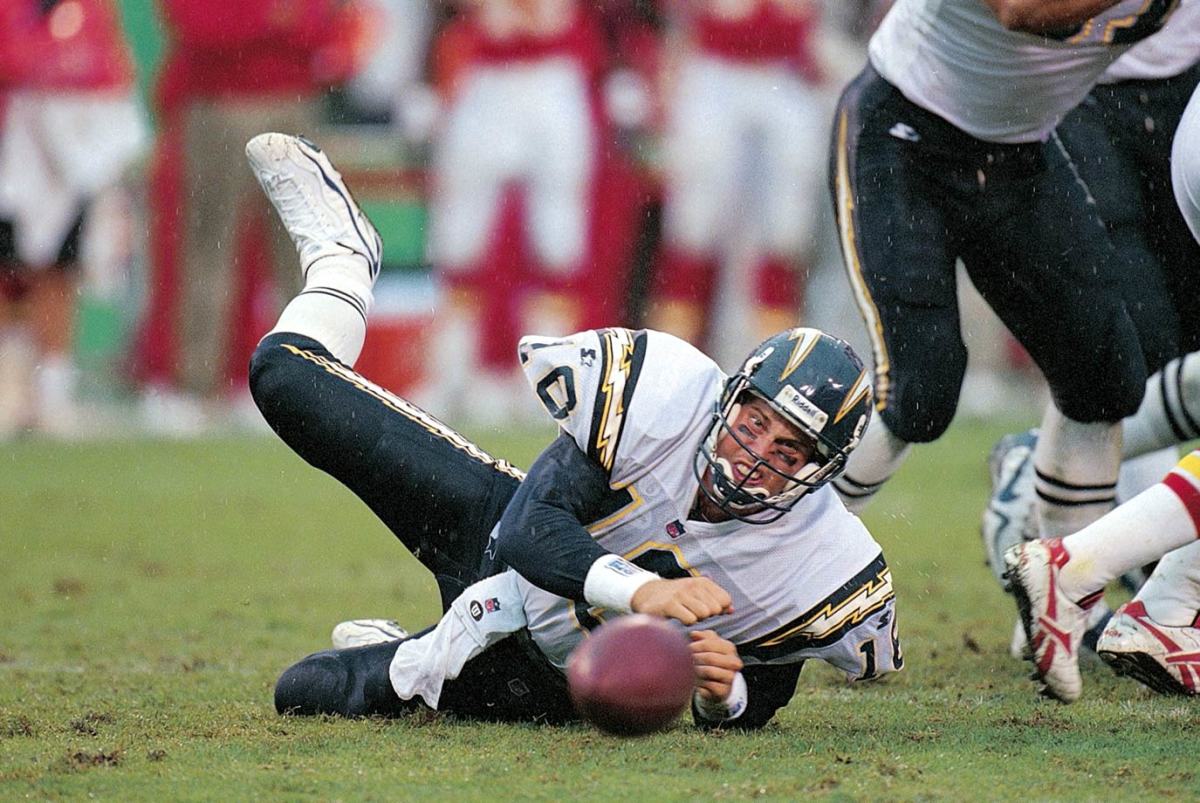
Who else was it going to be be? Leaf's descent from college superstar and Peyton Manning's main rival for the No. 1 draft pick to NFL dud was shockingly rapid (he was named the No. 1 draft bust on an episode of NFL Top 10). The No. 2 pick in 1998, Leaf turned in a brutal rookie season—two touchdowns, 15 interceptions and a 39.0 QB rating. His sophomore campaign wasn't much better, either, as the Chargers stumbled to 1–8 in his starts. He was a Cowboy by 2001 and gone from the league by '02.
Jim Druckenmiller | QB, San Francisco 49ers
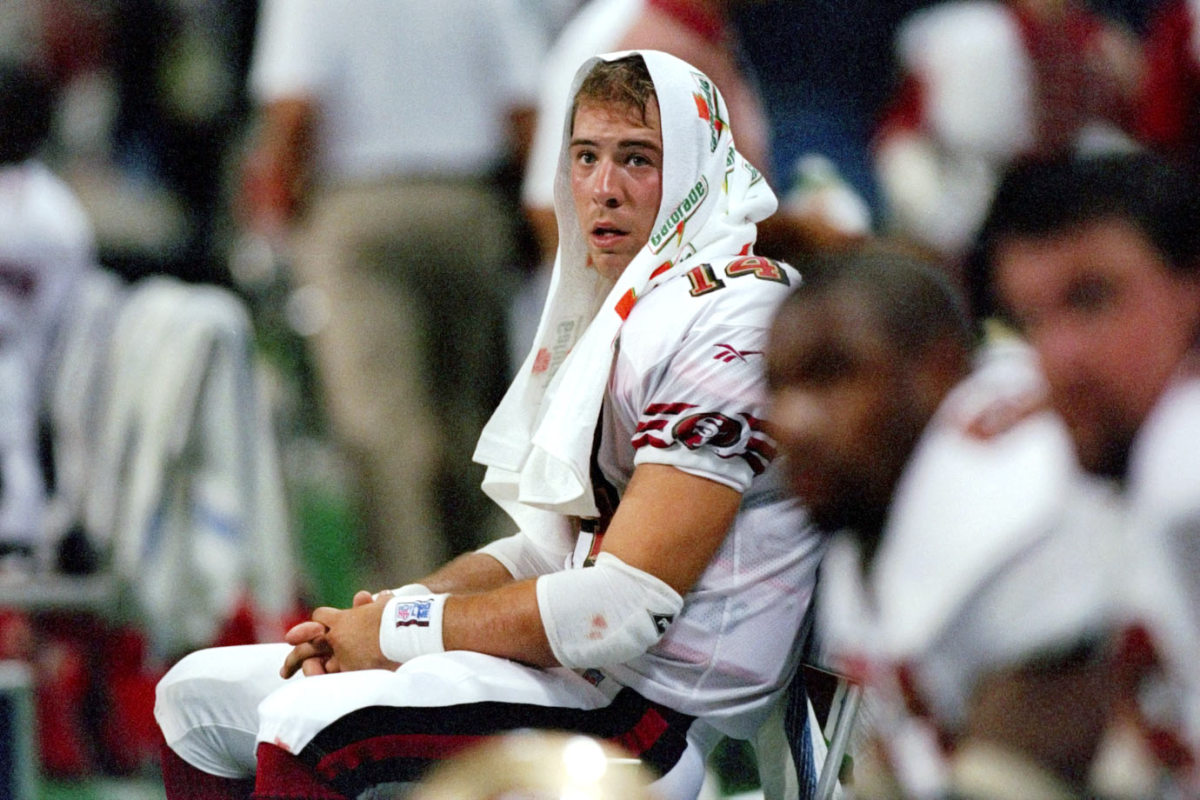
The 49ers have a pretty decent history of great quarterbacks, but Druckenmiller was their biggest blunder. Selected with the No. 27 pick in the 1997 draft, the former Virginia Tech star was taken against the wishes of then Vice President and general manager Bill Walsh, who wanted Arizona State's Jake Plummer instead. The idea, of course, was that Druckenmiller would be the next man in line after Joe Montana and Steve Young. In the end, nobody in the organization would take the blame for Druckenmiller's selection, which is what happens when a franchise takes a quarterback in the first round and he completes just 21 passes in 52 attempts for 239 yards, one touchdown and four picks before he's traded to the Dolphins. Druckenmiller clearly wasn't the heir apparent to Young or anybody else.
Dan McGwire | QB, Seattle Seahawks
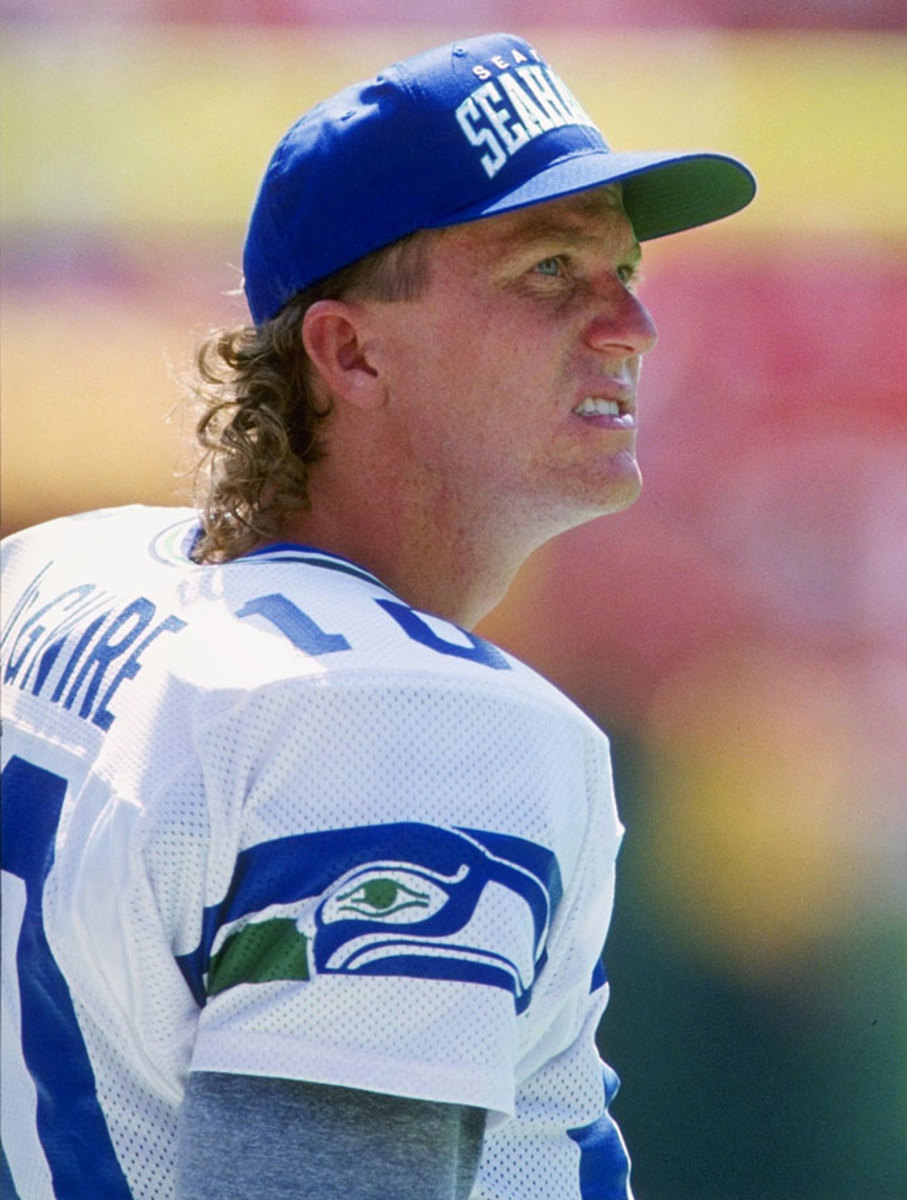
In 1991, Seahawks coach Chuck Knox was on the path out of the Emerald City, as he and owner Ken Behring didn't see eye-to-eye on much of anything. Still, Knox tried to do his job, and in the 1991 draft, he had his eye on one quarterback in particular: a young man by the name of Brett Favre. Knox wondered aloud if Favre might be available with a lower pick than Seattle's No. 16 selection, but Behring overruled him and went with San Diego State QB Dan McGwire, the brother of Mark McGwire. Knox was so unimpressed by the pick that he refused to give a quote about it after it happened. Over five years in Seattle and Miami, McGwire completed 74 of 148 passes for 475 yards, two touchdowns and six interceptions. As you may already know, Favre, selected with the No. 33 pick that year, did a bit better than that over time.
Lawrence Phillips | RB, St. Louis Rams
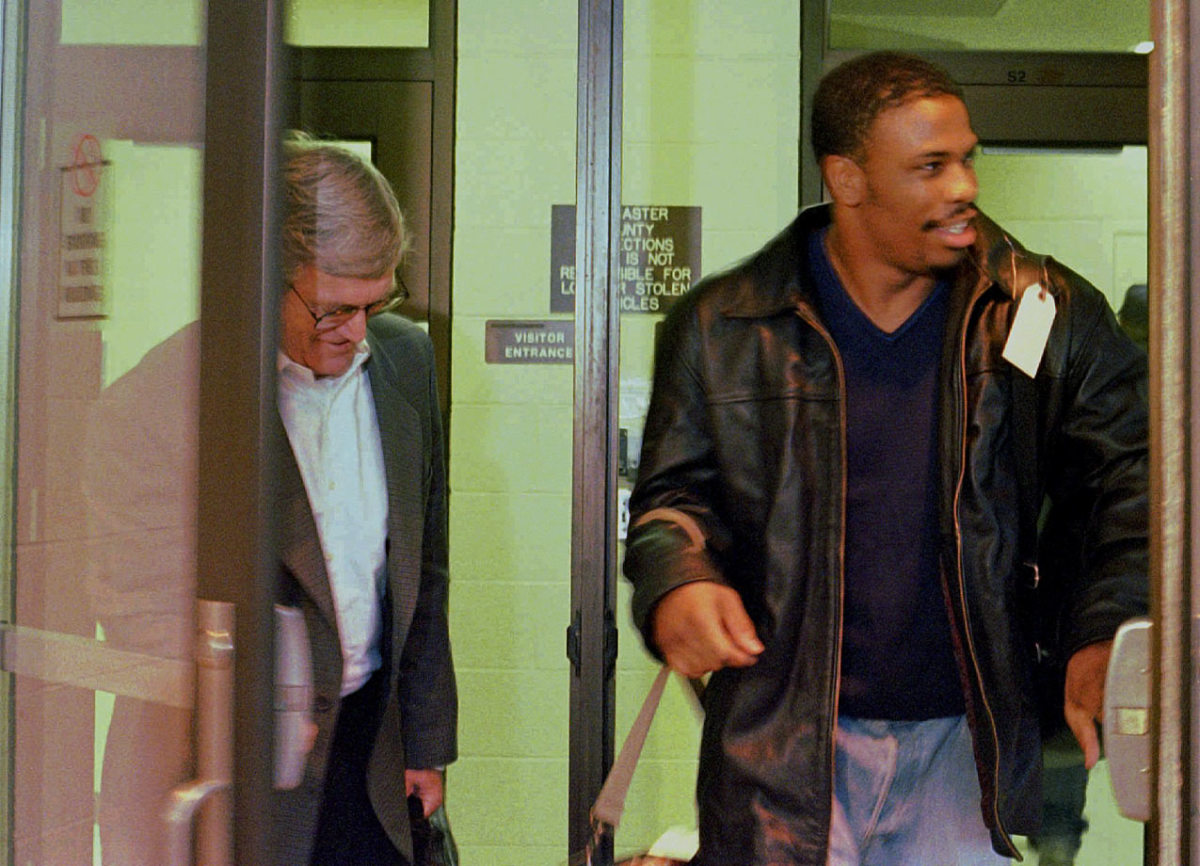
The Rams took Phillips, a star who rushed for over 3,000 total yards in three seasons at Nebraska, with the No. 6 pick in the 1996 draft, despite a litany of character issues that had some teams taking him off their boards altogether. But the Rams believed in Phillips so much that they traded Jerome Bettis to the Steelers to make way for their new supposed star. Phillips was OK on the field in St. Louis, but was arrested three times and spent 23 days in jail during his 19 months with the team. In the end, he was released after storming out of Dick Vermeil's office when the coach told him that he was being demoted. The Dolphins gave him a shot, but released him after he pleaded no contest to assaulting a woman in a nightclub. With the 49ers his blocking was so bad that he helped to end Steve Young's career.
Kenyatta Walker | OT, Tampa Bay Buccaneers
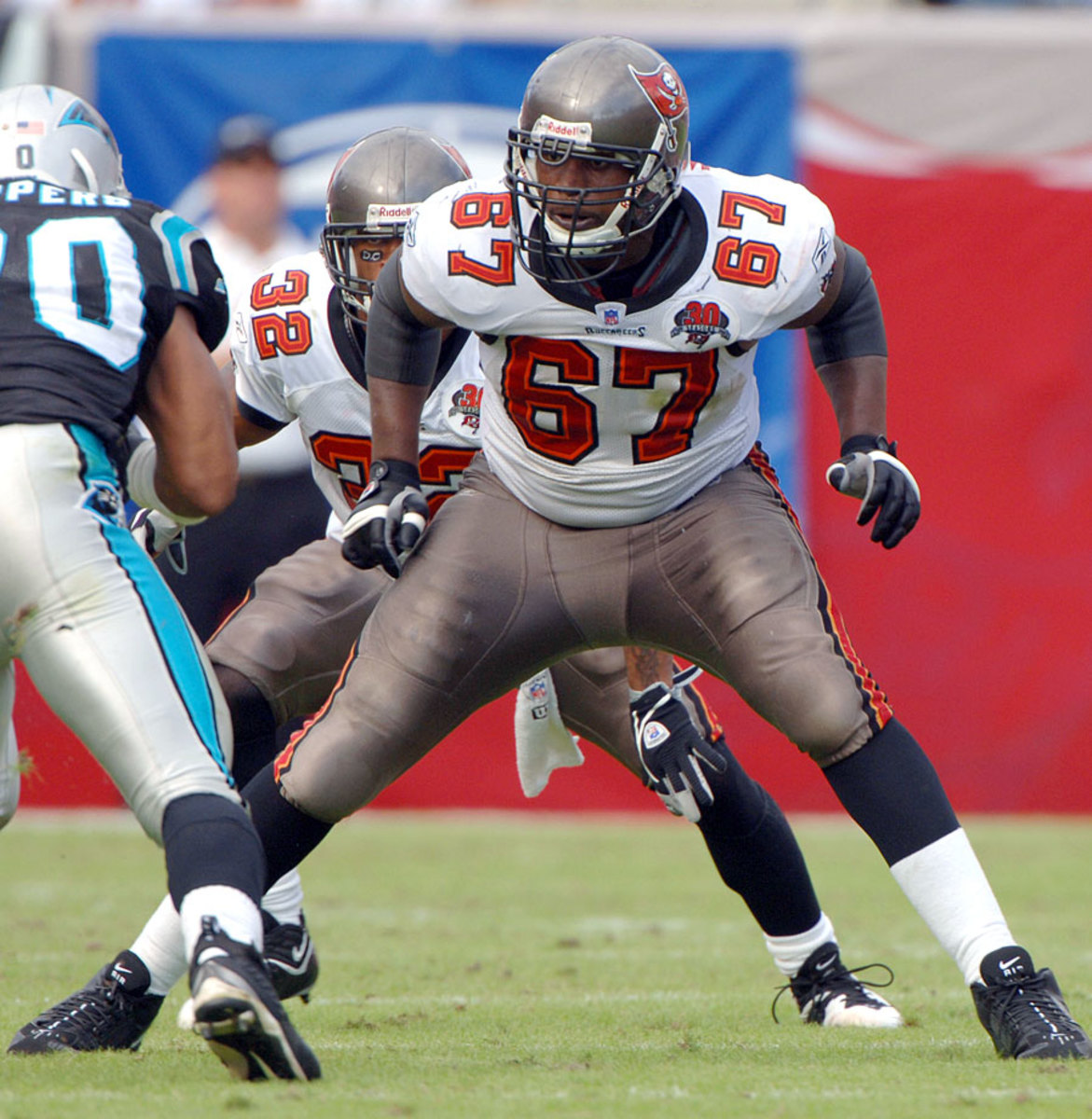
It's not that the Bucs should have been faulted for taking Walker with the No. 14 pick in the 2001 draft out of Florida. The Bucs plugged Walker in on the left side in his first season, though he played right tackle in college. We don't have charting stats for Walker's 75 games played and 73 games started from 2001 through '06, but we do know that Julius Peppers bedeviled Walker like few others in the NFL. In one 2005 game against the Panthers, Walker was so flipped out about trying to block Carolina's ginormous defensive end, he committed three false starts in a five-play span and allowed two sacks. This was par for the course. The Bucs released Walker in March, 2007. The Panthers gave him a shot after that (perhaps to make Peppers feel even better about himself in practice), but he didn't make final cuts.
Jake Locker | QB, Tennessee Titans
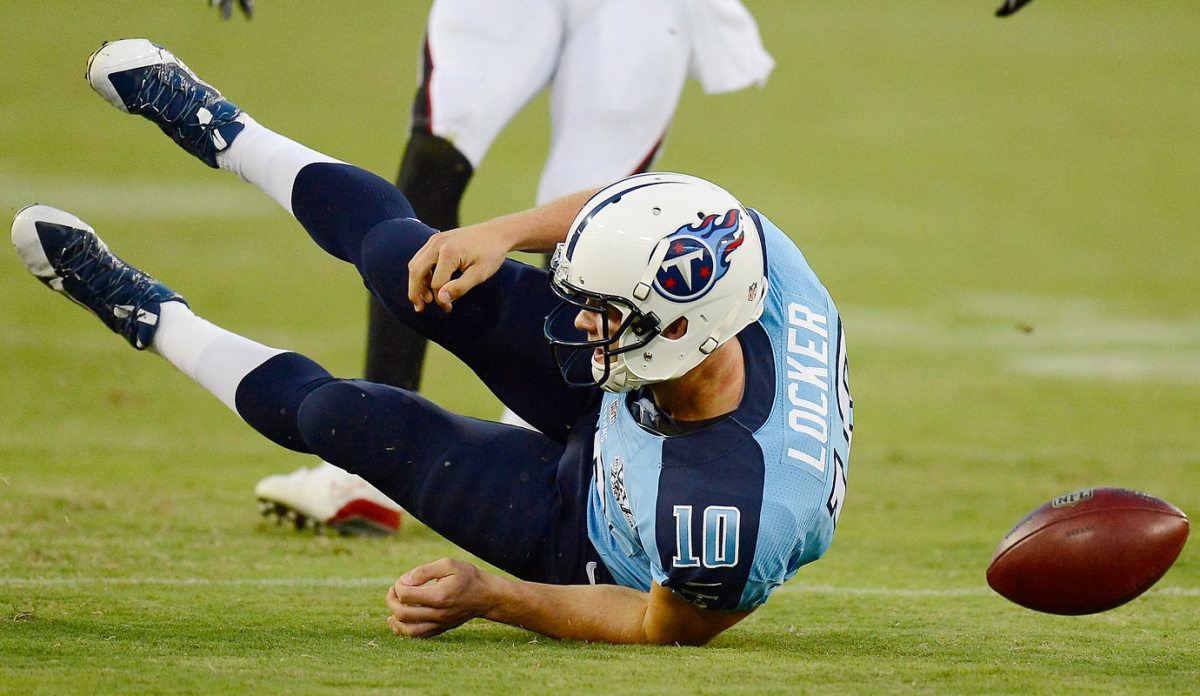
Let's not overthink this one. The freshly retired Locker, the eighth-overall pick in the 2011 draft, is among the most disappointing draft picks in recent memory. The oft-injured quarterback never played more than 11 games during any one season, and Tennessee's fortunes tumbled along with him—from nine wins during his rookie year (when they still had Matt Hasselbeck under center) to six the following and eventually to last season's 2–14 meltdown.
Albert Haynesworth | DT, Washington Redskins
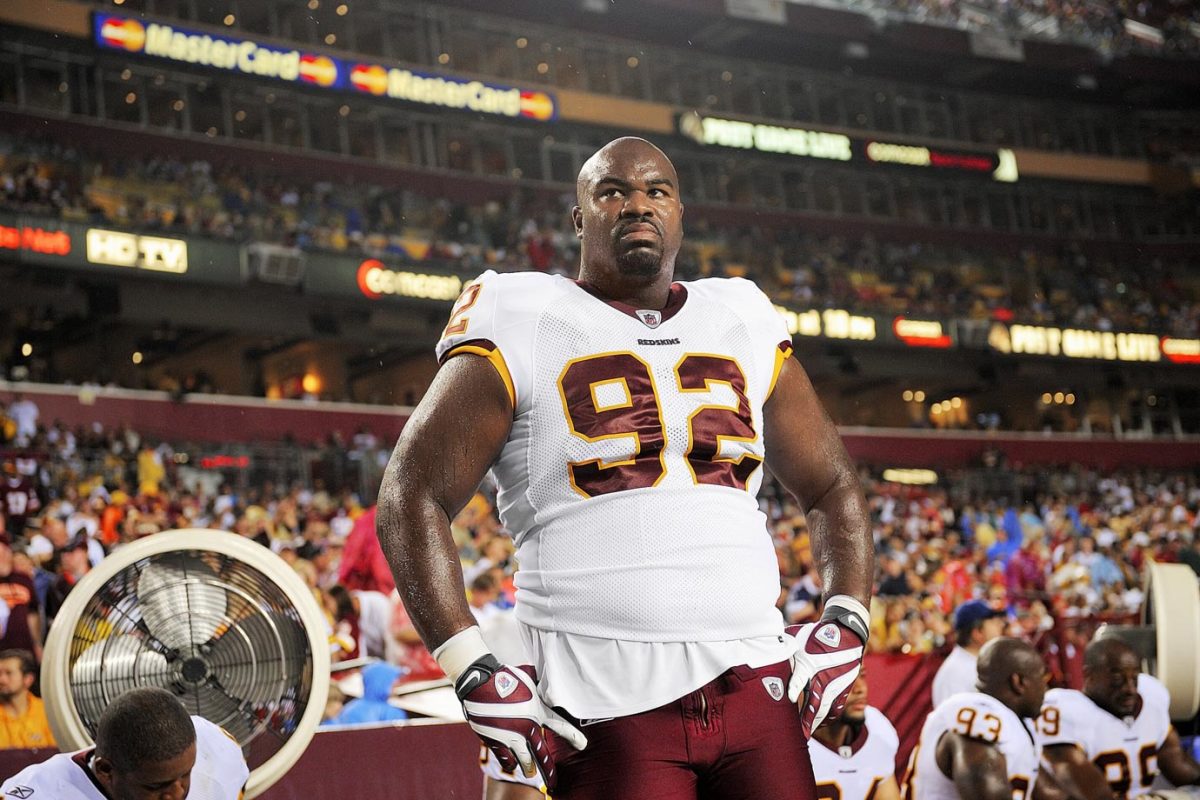
When the Redskins signed the star Haynesworth, a 2002 first round pick by the Titans, to a seven-year, $100 million contract with a then-record $41 million guaranteed in Feb. 2009, they unexplainably made him a two-gap tackle in more of a hybrid defense. Basically, they paid Haynesworth handsomely to soak up blockers for other pass-rushers. It was perhaps the most ridiculous decision of Vinny Cerrato's ill-fated time as Washington's GM, but Haynesworth didn't help his case with a poor attitude and inconsistent conditioning. For all their money, the Redskins got two years from Haynesworth, in which he put up 6.5 sacks and 42 total tackles. In 2012, the Redskins were handed severe salary cap penalties for their attempts to spread out the damage of Haynesworth's contract during the uncapped year of 2010.
